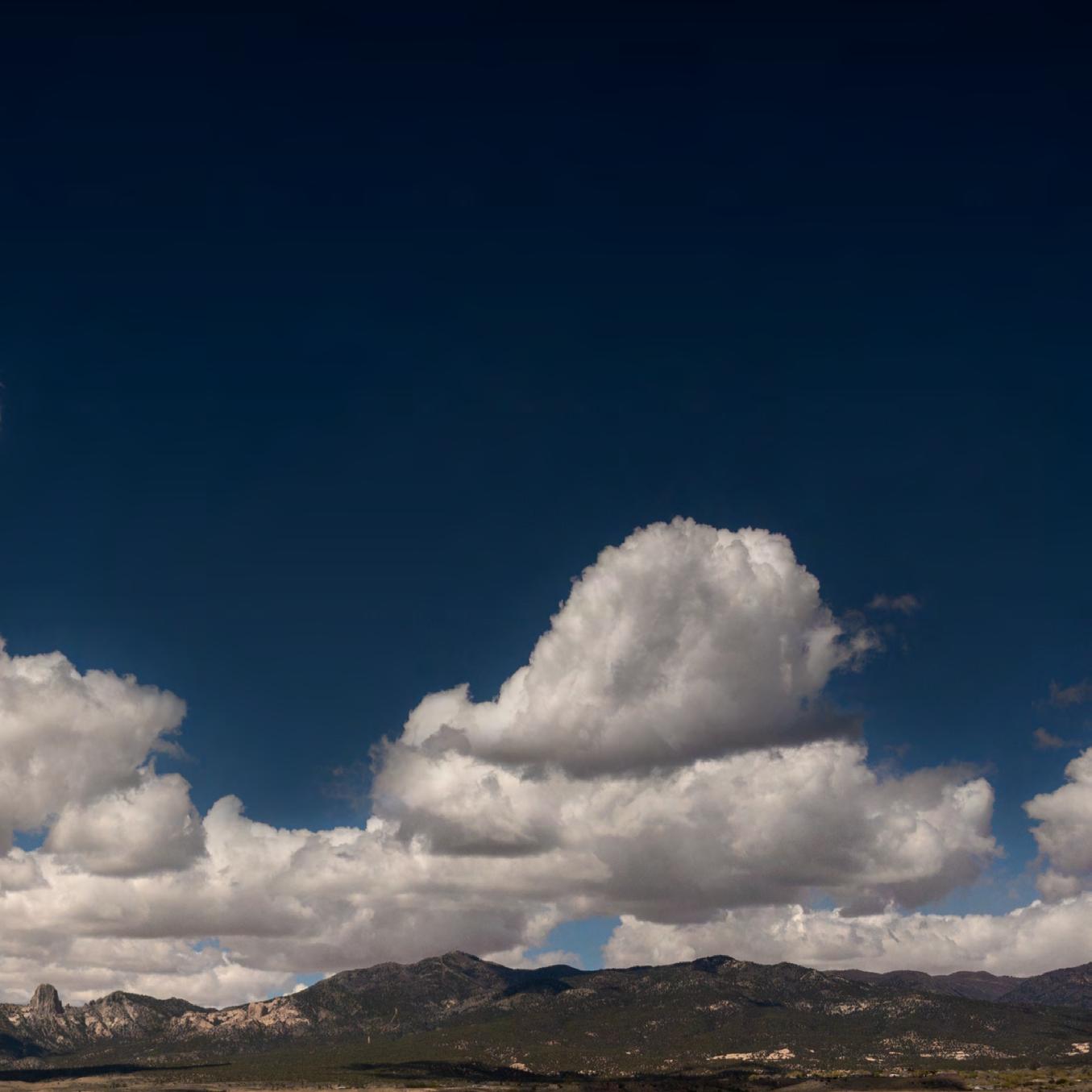 Wíssiv Káav Tüvüpüa Ut e Mountain Lands
Wíssiv Káav Tüvüpüa Ut e Mountain Lands
They had all the answers.
 ~ Emily Whiteman ~ on family ties and life changes
~ Emily Whiteman ~ on family ties and life changes

creative and photography direction: Anthony Two Moons / anthonytwomoons.com
photography: Latyr Lopez | Vance Lee | Alyna Jacket | Acasia Lee | Taliyah Ketchum | Konrad Jacket | Jacquez Oros
Lamoyn Whiteman | Allias Lee | Manuel Lee | Markeith Casey | Sissaley Lopez | Shayna Ketchum-Mills | Angel Heart
Adeljaundra Ketchum-Mills | Jane Lehi | Loma House | Emily Whiteman | Alfred Wall, Jr
art direction and design: Susanne Cerha / silo-design.com
printed by: Hemlock / hemlock.com
year printed: 2022
paper stock: 80 lb Rolland Enviro Satin Digital Smooth Book 100% PCW FSC Recycled
typography: Skolar Sans Latin by David Březina and Sláva Jevčinová | Mrs Eaves XL Serif and Mr Eaves XL Sans by Zuzana Licko
plant identification: All plants identified via photos scanned by the app Picture This, available on the Apple app store
Special thanks to:
First Nations Development Institute
Center for Rural Outreach and Public Services, Inc.
Santicola & Company
UMUT Tiwahe Initiative
The Language Conservancy
UMUT Council, Elders, Youth, Members
All rights reserved. No part of this book may be reproduced, distributed or transmitted in any form, including posting to the internet, photocopying, or any other electronic or mechanical methods, without the written permission of the publisher, except in the case of brief quotations embodied in critical reviews and certain other noncommercial uses permitted by copyright law.
TABLE OF CONTENTS Wíssiv K
07
INTRODUCTION: By Juanita Plentyholes
11 CHAPTER ONE: A changing environment
45 CHAPTER TWO: On childhood then and now
97 CHAPTER THREE: Family ties and life changes
131 CHAPTER FOUR: Seasonal living Wíssiv K áav Tü vüpüa U te Mountain Lands
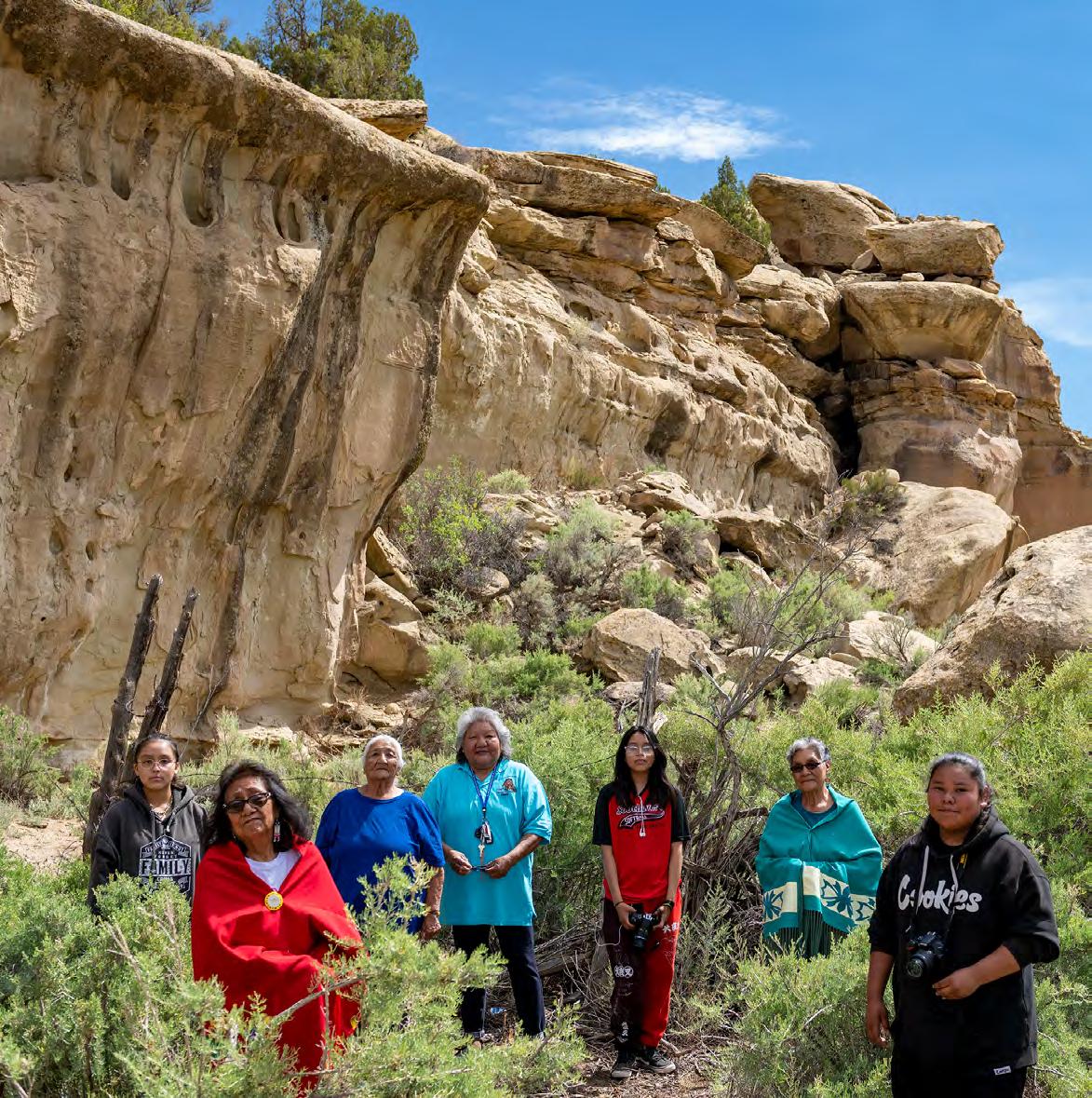
Maik, thank you for giving us the opportunity to publish this book.
The Ute Nation consists of three tribes and seven bands, including the Weenuche band of which the Ute Mountain Ute Tribe are members. As hunters and gatherers, the Ute Nation historically roamed all of Colorado and parts of Utah, New Mexico, and Wyoming, and knew these lands well.
Throughout time, changes to the lands due to settlements, erosion, and climate change have impacted the Utes’ way of life. This project provided us with an opportunity to connect elders with youth members, so that the elders
could share their stories and travel together to different parts of the reservation in order to witness these changes to the land.
This project comes at a crucial time; as we lose our elders we also risk losing their teachings and practices that were passed down from their ancestors, unless we ensure that our younger generation maintains this connection. By staying connected to these lands, and making use of new tools and technology, we have some hope of preserving our culture and language for our future generations.
Tuvuche Toweyak , thank you very much.
JUANITA PLENTYHOLES | Tiwahe Director
7 wíssiv káav tüvüpüa: introduction
INTRODUCTION



CHAPTER 1
A changing environment

12 ute land storybookmountain lands: a changing environment A CHANGING ENVIRONMENT
We used to have a lot of water that came from the mountain. Our snow was deep.
~ Emily Whiteman ~


When it used to snow in winter, it would get really deep. Now, it doesn’t. Then, we had all the water we needed. After winters with heavy snowfalls, the water would last till June or July. The water would be coming down to where we have our Sundance. That was good. We could drink that water. That would help us. But now we get little snow, and the land is dry. We all just get a little bit of water, and it is not enough.

15 wíssiv káav tüvüpüa: a changing environment
~ Emily Whiteman ~
Water brings life, sustenance, and is a tool of blessing and prayer.

water plays a central role in the cultural practices of the tribe and its relationship to the natural world. each year in the spring the tribe hosts the bear dance in towaoc, and in the white mesa community during the summer. the bear dance is a social gathering and a personal endurance milestone of individuals of the tribe. over the course of several days, a significant amount of water is used to wet the grounds for the ceremonial dance and to refresh the people in attendance.
source: tentribespartnership.org/wp-content/uploads/2020/01/ch.-5.3umut-current-future-water-use-12-13-2018.pdf


ute mountain lands: a changing environment
Before, when the tribal members moved for Sundance, there used to be water coming out of the spring. Now it’s all dry up there. Seems like it is dry everywhere. Just a little part of the Ute has water. Sundance is about the same. Things are changing here, with Sundance.
 ~ Loma Root House ~
~ Loma Root House ~
Russian Knapweed

Rhaponticum repens
native to eurasia, this plant has been introduced to north america, where it is classified as invasive and often found in pastures and waste lands.


Western Pasqueflower
Pulsatilla occidentalis all parts of this wildflower, native to the western mountain regions of north america, are toxic to humans.
Botanical snapshot
Date july, 2022
Identification picture this (available on the apple app store)
Sainfoin Holy clover

Onobrychis viciifolia native to the mediterranean regions of the middle east and europe, it was introduced to north america as livestock forage.
Bunchleaf Penstemon

Penstemon heterophyllus endemic to california, this flowering perennial is often used in habitat gardens where it provides nectar for butterflies and hummingbirds.
Common Mullein

Verbascum thapsus common mullein has been cultivated by people since colonial times. The flowers are occasionally brewed into a tea. as cattle and sheep avoid grazing it, the plant can become dominant over time.
Nodding Thistle

Carduus nutans originally from europe and asia, this plant is considered invasive in north america. its high concentration of nitrates may poison sheep and cattle.
Yellow salsify

Tragopogon dubius invasive in some areas, yellow salsify can replace other vegetation and decrease forage for livestock. the seed heads resemble large dandelion heads.
Scarlet Gilia
Ipomopsis aggregata some native american tribes boiled this native (to western north america) perennial plant for kidney health.
20 ute mountain lands: a changing environment
Plains Pricklypear
Opuntia polyacantha
this native plant is a fruit-bearing cactus that grows in sagebrush, savannas and prairies. the fruit is high in fiber, antioxidants and carotenoids.

Tamarisk

Tamarix ramosissima
classified as an aggressive invasive species, it was originally imported the 1870s as an ornamental, and to control erosion along the rio grande and colorado rivers. its taproot can grow to 30 feet depth.
Common Yarrow

Achillea millefolium the crushed plant was applied to wounds and burns. The dried leaves were used as a tea to soothe colds, fever, and headache.
Hairy False Goldenaster
Heterotheca villosa
this native perennial is tough, drought- and pest resistant, and often used in desert and rock gardens.


Rocky Mountain Penstemon
Penstemon strictus used by wildlife and is rated as fair forage for cattle and fair to good forage for sheep.

Wyoming Indian Paintbrush

Castilleja linariifolia
This plant grows 3 feet tall and prefers rocky slopes and arid plains. it blooms from summer to fall.
Field Bindweed
Convolvulus arvensis
native to the mediterranean region. it has been used as a laxative, and gynecological aid to stop bleeding, to stimulate bile flow, and as a medicine for spider bites.
Banana Yucca
Yucca baccata
native to the southwestern united states and mexico, banana yucca has edible fruit that ripens in late summer.
wíssiv káav tüvüpüa: a changing environment

byline text about image 21
due to the lack of surface water and the dry climate of the reservation, the tribe relies solely on groundwater as the source of water for stock. cattle ranching is an important enterprise to the tribal members. before the utes were forced to move onto their federally designated reservations, they were nomadic hunter/gatherers. this stationary lifestyle forced the ute people to turn to farming and raising cattle. today, the tribe and individual members own more than 1,900 head of cattle.
source: www.energy.gov/indianenergy/ute-mountain-tribe-1994-project

The Tribe relies solely on groundwater as the source of water for stock.





26 ute mountain lands: a changing environment
It is the Tribe’s desire to create minimal disturbance to Mother Earth.
it is anticipated that the environmental consequences of the conversion from wind turbines to photovoltaic solar wells to irrigate land and cattle will be positive. this is in keeping with the ute mountain ute indian tribe’s belief and desire to create minimal disturbance to mother earth by human activities.
source: www.energy.gov/indianenergy/ute-mountain-tribe-1994-project

That is where we lived, over there. There was water there. There was a small lake, and the springs came into the lake. Now the little lake is all dry. But the spring’s there. Still the water is coming out.
~ Loma Root House ~
28 ute mountain lands: a changing environment
Now the little lake is all dry.

At that time, there were no bears or large predators like that on the mountain – just our sheep and horses. I don’t know where the bears came from, but there are bears there now. Because of them, it’s kind of scary to even go up for a cook-out. There have been problems with bears at Sundance too. Some of the bears have been hitting the camps.
 ~ Loma Root House ~
~ Loma Root House ~

31 wíssiv káav tüvüpüa: a changing environment

Water has an important role in the Sundance ceremony.

Participants of the Sundance fast for several days. At the conclusion of the ceremony, water from mountain springs is used to rejuvenate and purify the participants. Because water is held in reverence and is critical to these traditional ceremonies, water quality is also highly important to the cultural practices of the Tribe. Therefore, it is necessary for the water to be of pristine quality in order for healing and sustenance to occur and to provide the participants with the necessary mindset in practicing their traditions.
source: tentribespartnership.org/wp-content/uploads/2020/01/Ch.-5.3UMUT-Current-Future-Water-Use-12-13-2018.pdf
A long time ago, the weather used to be really good. What we don’t see now is the snow. It used to be really high and very deep. It was good to be outside playing in the snow. Snowball fights. I used to melt the snow for drinking water and to cook with my mom.
~ Jane Lehi ~
34 ute mountain lands: a changing environment
Snowball fights.
35 wíssiv káav tüvüpüa: a changing environment



Low snow pack and soaring temperatures made 2020 the third-driest year on record in Colorado.
source: www.watereducationcolorado.org/fresh-water-news/utemountain-ute-tribe-faces-another-devastating-drought-year-butrecent-rain-wheat-prices-bring-hope/




We used to go up the mountain to pick chokecherries and other berries. When the wild onions came out in February and March, we would gather them too. Nice and green. When it used to rain. But this past February when we went out and picked some, the onions were small. They were really small.
 – Emily Whiteman
– Emily Whiteman
39 wíssiv káav tüvüpüa: a changing environment
Back then the land would be nice and green.

40 ute mountain lands: a changing environment
None of us cook outside now. We can’t cook because of fire regulations. They told us not to cook outside, because it is dry. It wasn’t like that back then, when it used to really snow. We had all that water and we knew it wasn’t dry.
 ~ Emily Whiteman ~
~ Emily Whiteman ~


42 ute mountain lands: a changing environment


CHAPTER 2
On childhood then and now

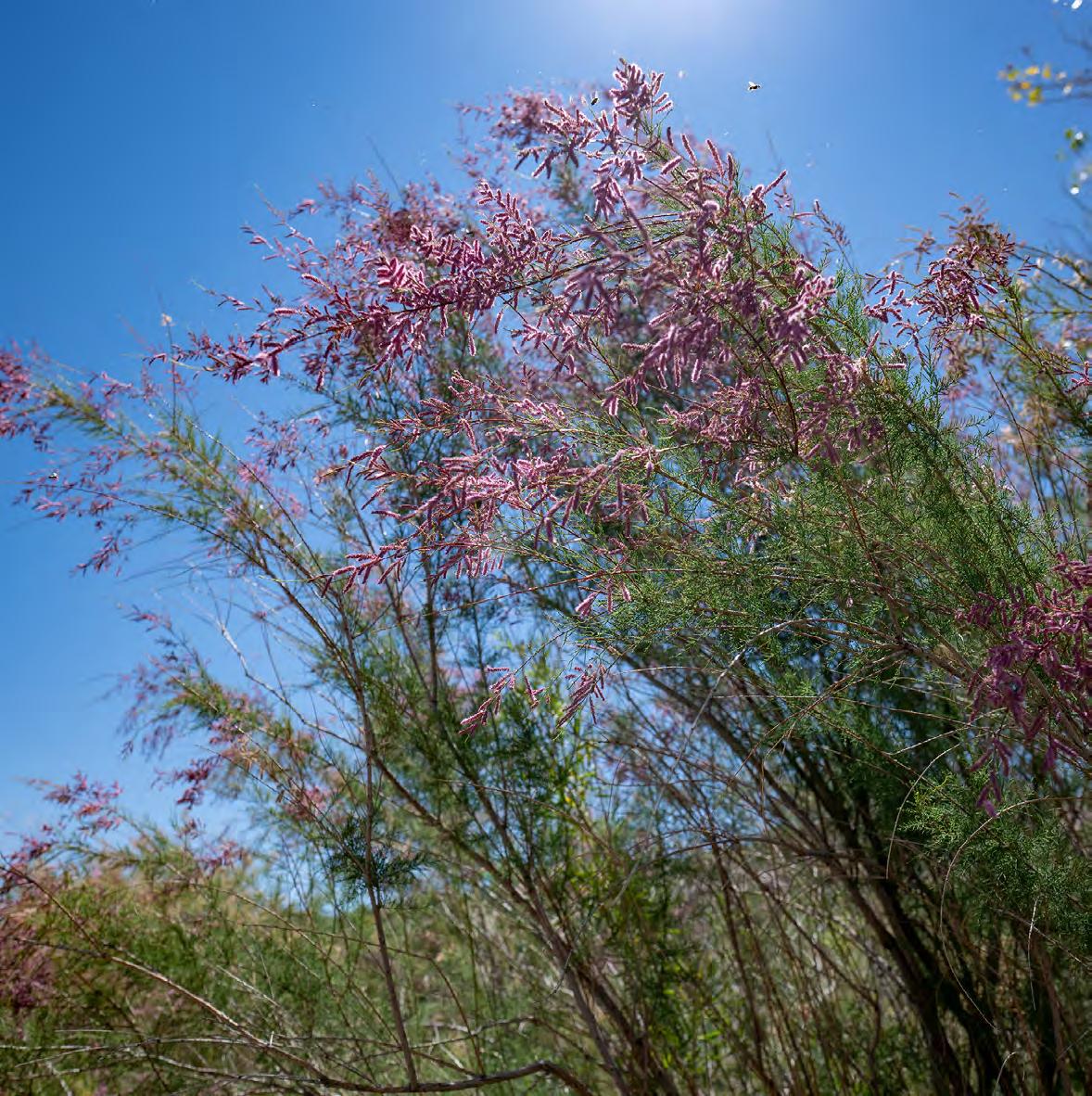


47
on childhood then and now
wíssiv káav tüvüpüa:
~ Jane Lehi ~
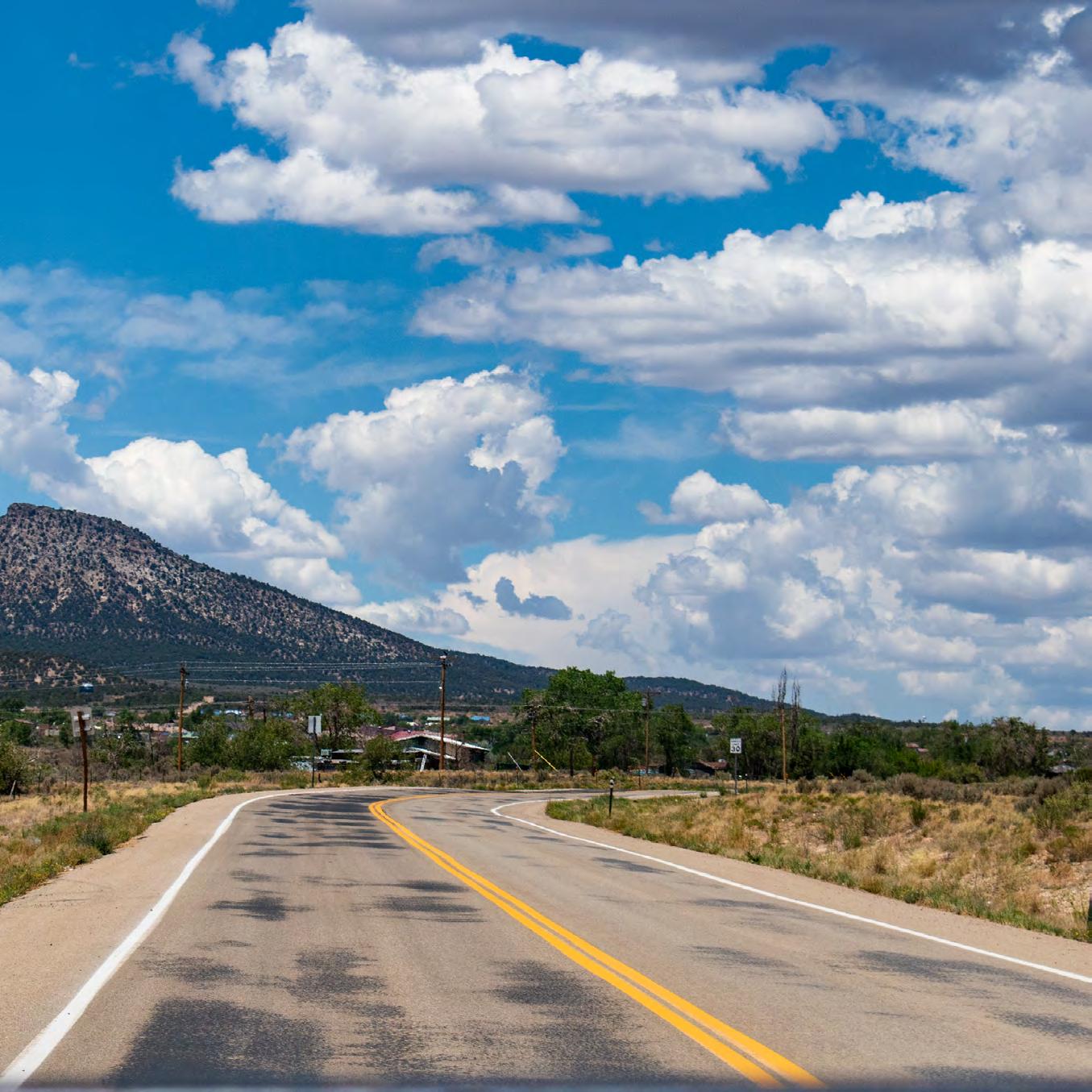
I was born in Ignacio, Colorado. I’ve lived here in Towaoc my entire life, with my parents and my brothers and sisters. We used to have land, sheep, goats and horses.
~ Jane Lehi ~
49 wíssiv káav tüvüpüa: on childhood then and now

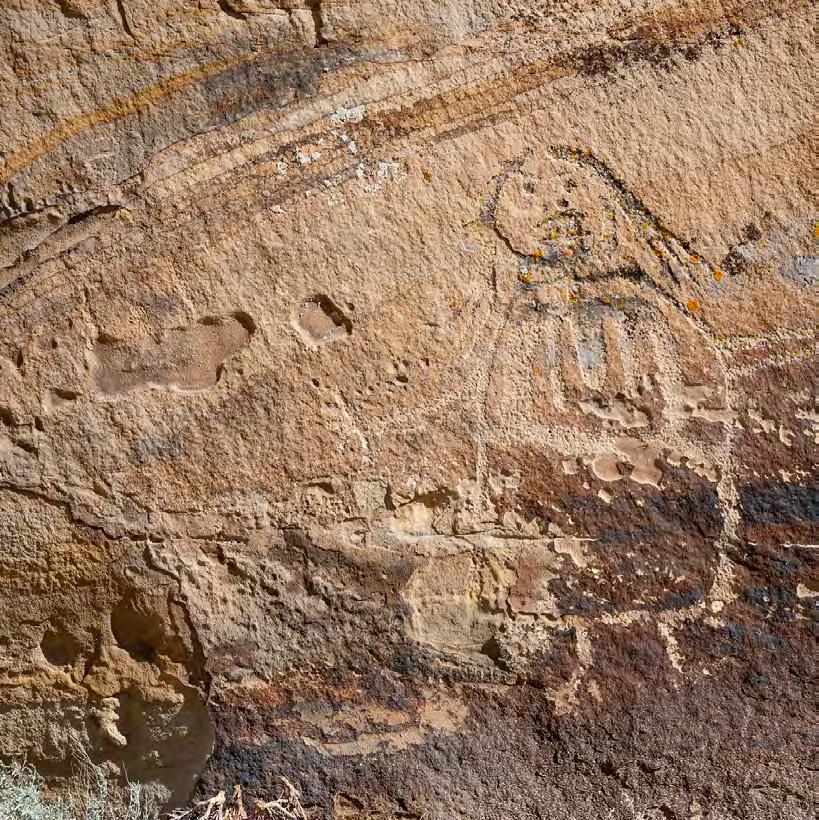
We had corn fields where we’d go get our corn. We had chickens and roosters where we’d get our eggs. My mom would say ‘If you want eggs, you’d better go down and get some so I can cook them.’ So we would go and disturb the hen and the rooster. They were crying all over the place, but then we would have our eggs.
51 wíssiv káav tüvüpüa: on childhood then and now
~ Jane Lehi ~
Living Language Workshop
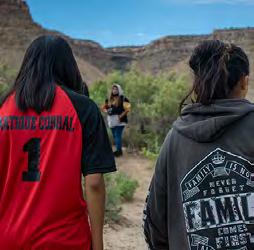




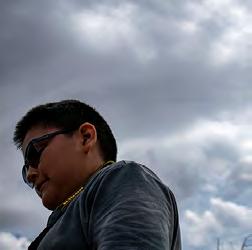

Participants
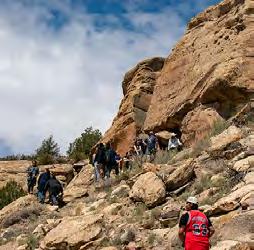
byline text about image 52 ute mountain lands: on childhood then and now
july, 2022
ute mountain reservation
Date
Location
latyr lopez vance lee alyna jacket acasia lee taliyah ketchum konrad jacket jacquez oros lamoyn whiteman allias lee manuel lee markeith
sissaley
shayna
angel heart adeljaundra ketchum-mills jane lehi loma house emily whiteman alfred wall,
casey
lopez
ketchum-mills
jr.
Purpose
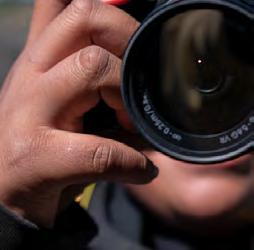
throughout time, changes to the lands due to settlements, erosion, and climate change have impacted the utes’ way of life. this project provided us with an opportunity to connect elders with youth members, so that the elders could share their stories and travel together to different parts of the reservation in order to witness these changes to the land.
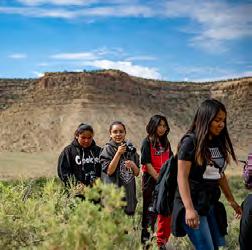

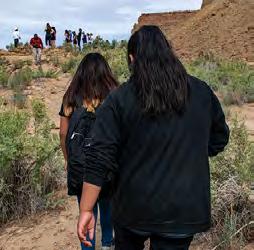

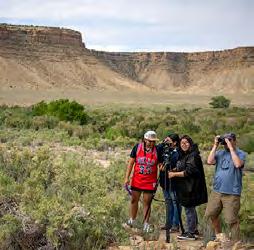


53 ute mountain lands: a changing environment wíssiv káav tüvüpüa: on childhood then and now

We rode a lot on the horses.
At my age, kids would all ride on horses. We all had them.
Even my grandparents had horses. We all would ride around here.
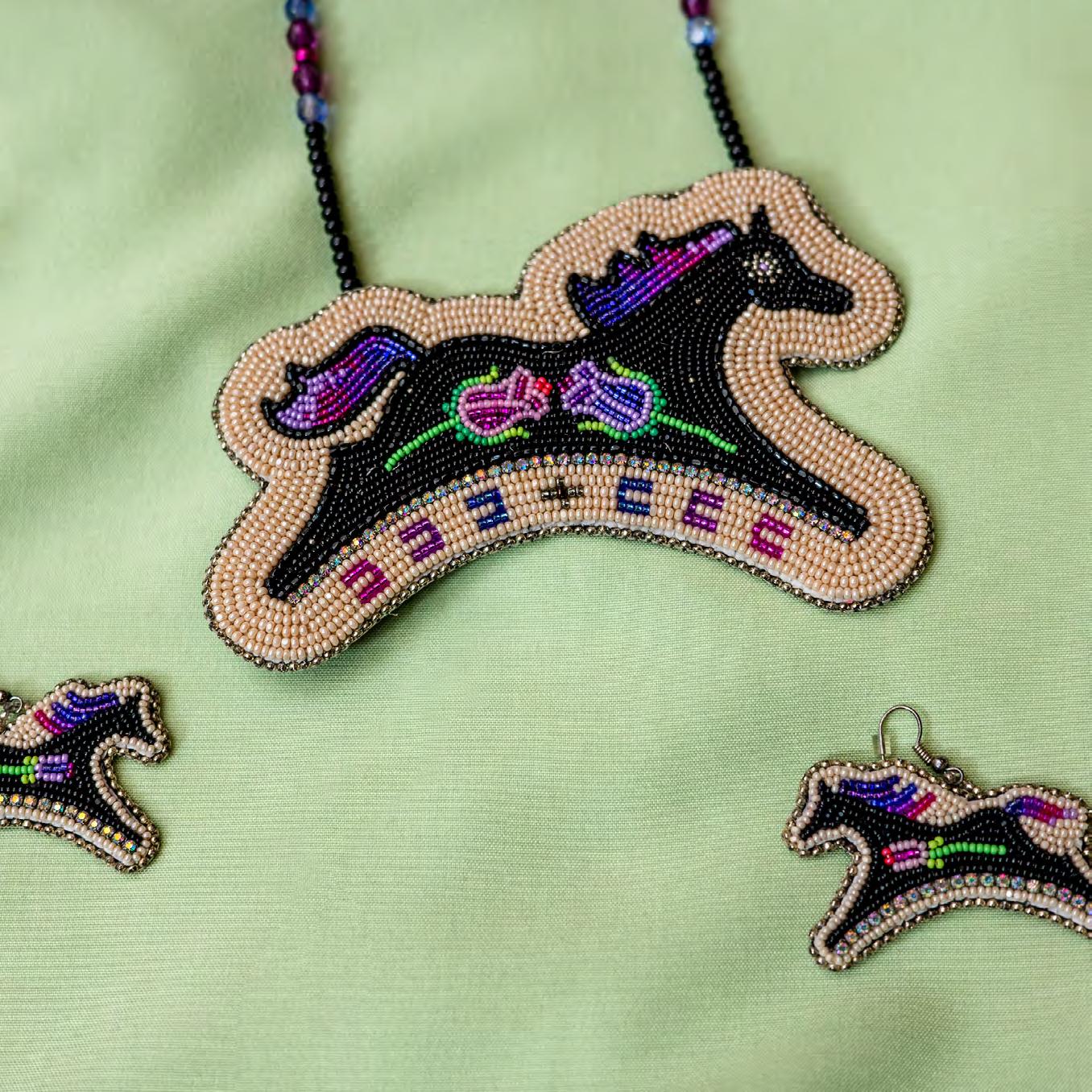
55 wíssiv káav tüvüpüa: on childhood then and now
~ Emily Whiteman ~
Now we don’t see horses any more here on our reservation.
~ Jane Lehi ~
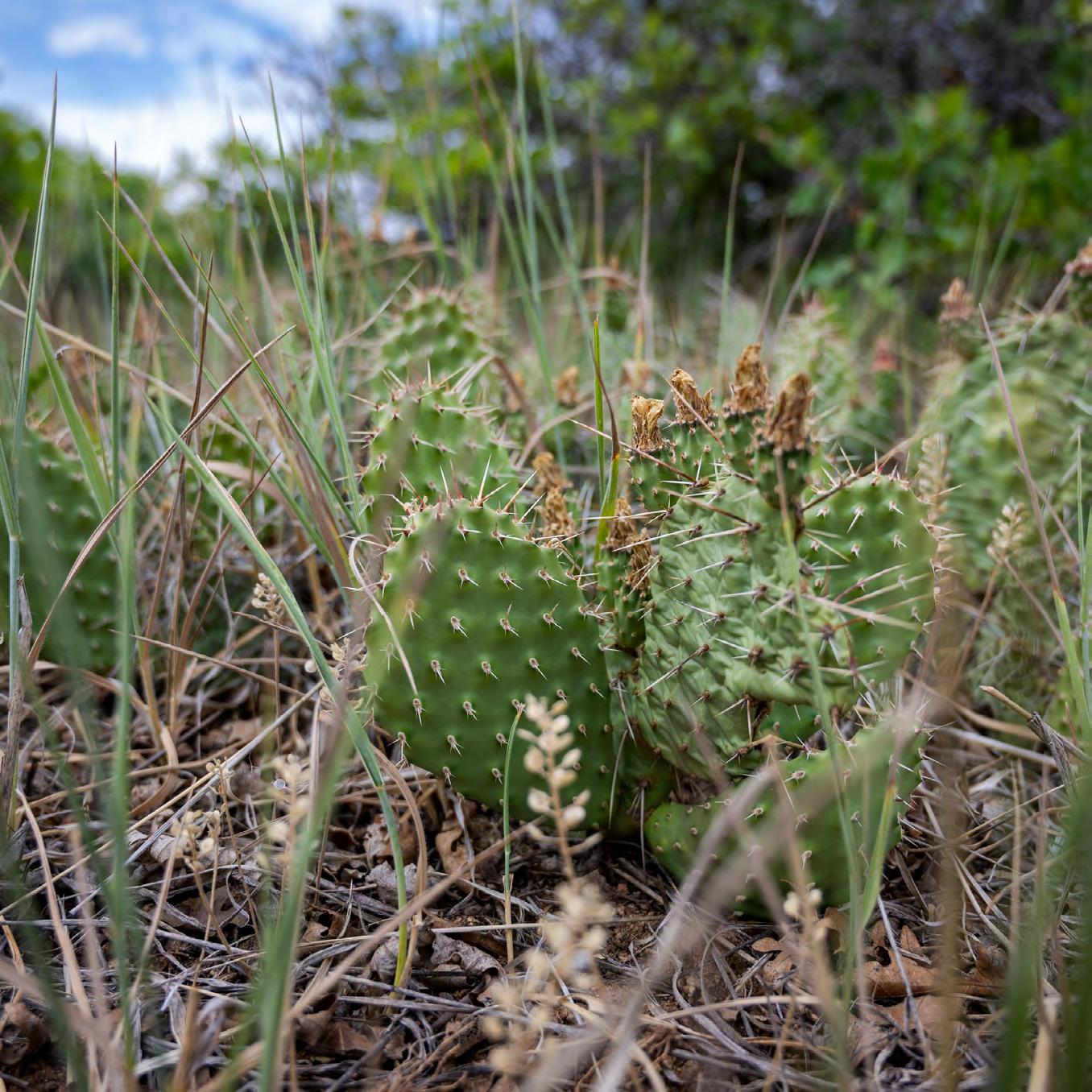
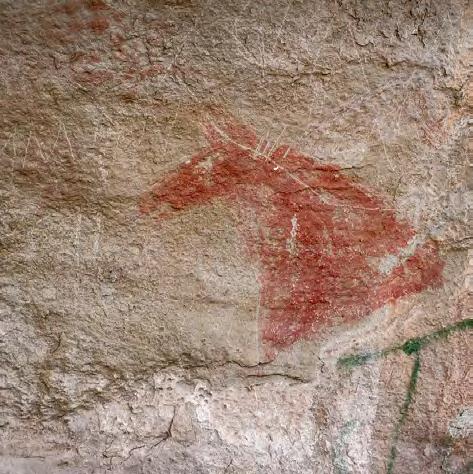
57 wíssiv
on childhood then and now
káav tüvüpüa:

59 wíssiv káav tüvüpüa: on childhood then and now
Riding horses all over the place was very fun.
~ Jane Lehi ~
The water was running down the little stream. We could go there and take a shower or a bath and play in the water.
And that’s how we got cleaned.

60 ute mountain lands: on childhood then and now
~ Jane Lehi ~

The things we did

62 ute mountain lands: on childhood then and now

63 wíssiv káav tüvüpüa: on childhood then and now
when we were kids.

shard of ancient pottery, frequently found on excursions.
I think I enjoyed myself more in the old days than I do today, especially when I see the kids and what they do now.
~ Jane Lehi ~
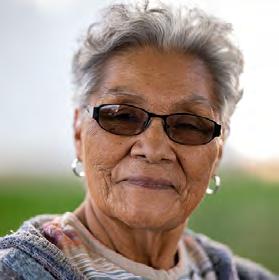
6666
When I was small, our grandparents were speaking Ute, teaching us both the language and how to live. They were always talking, and that’s how all of us learned everything. We didn’t speak English at all.
ute mountain lands: on childhood then and now
~ Emily Whiteman ~

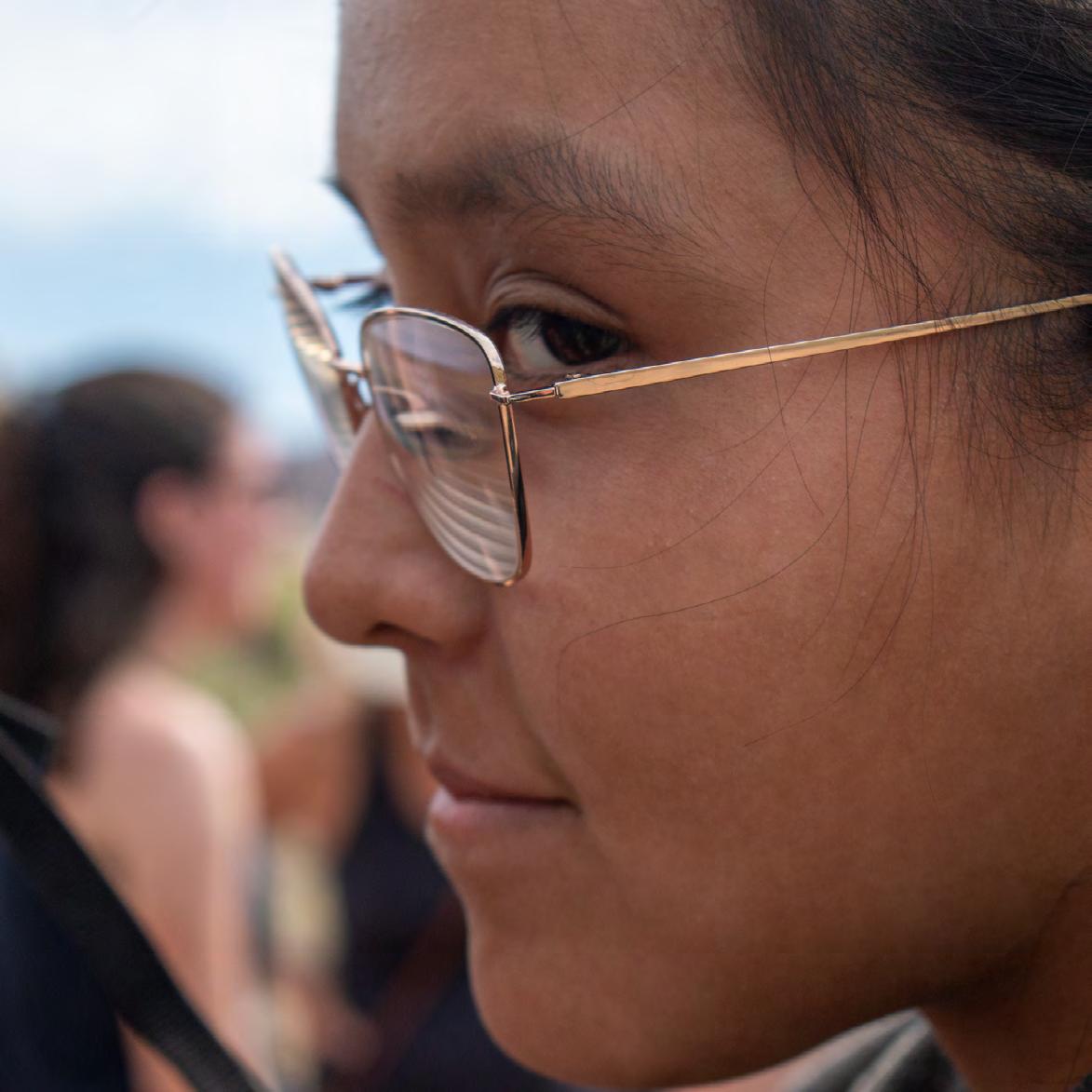
69 wíssiv káav tüvüpüa: on childhood then and now
But now, the kids only speak English.
~ Emily Whiteman ~
70 ute mountain lands: on childhood then and now
My childhood up in the mountains was different than what I see today. The young people didn’t have phones and technology.
~ Jane Lehi ~


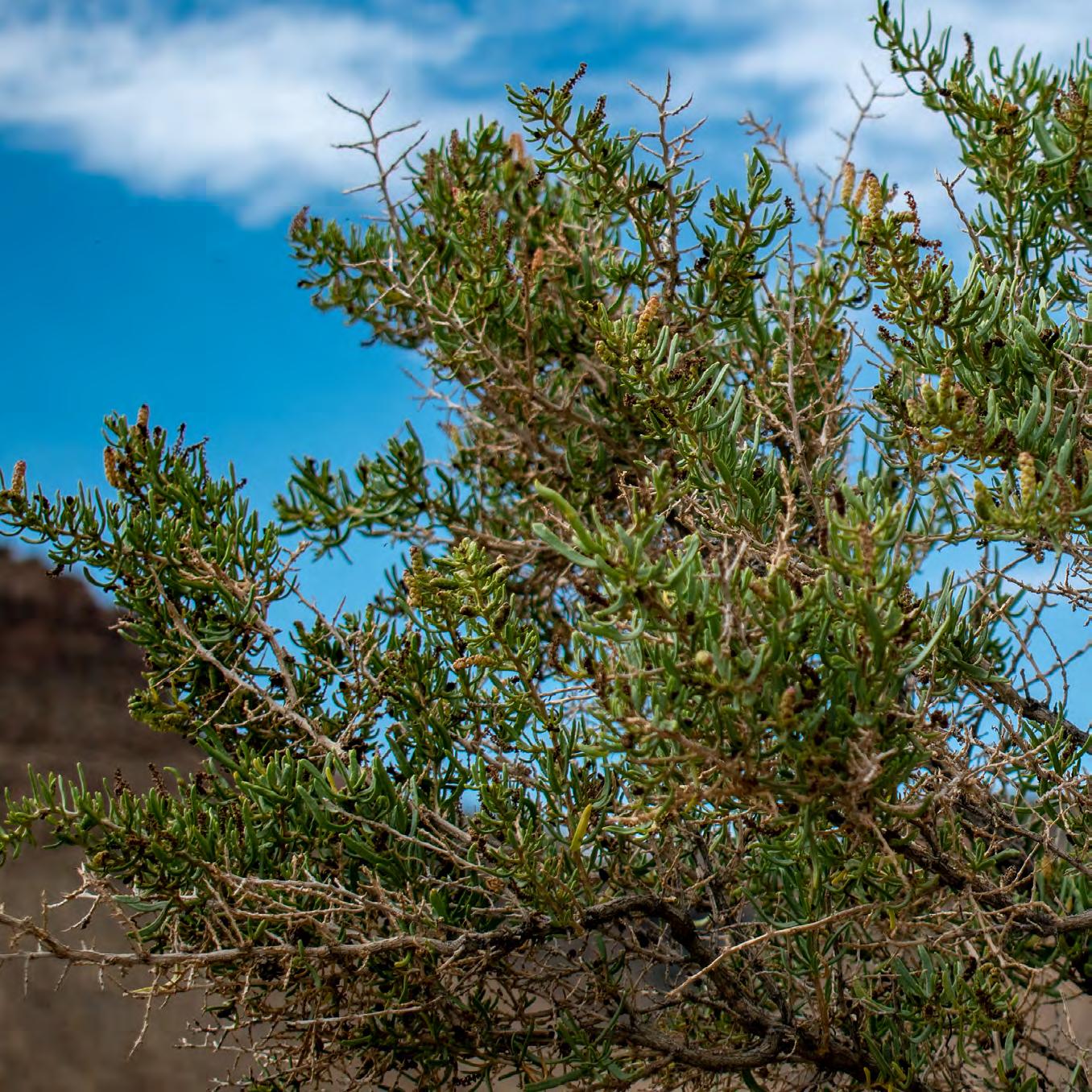
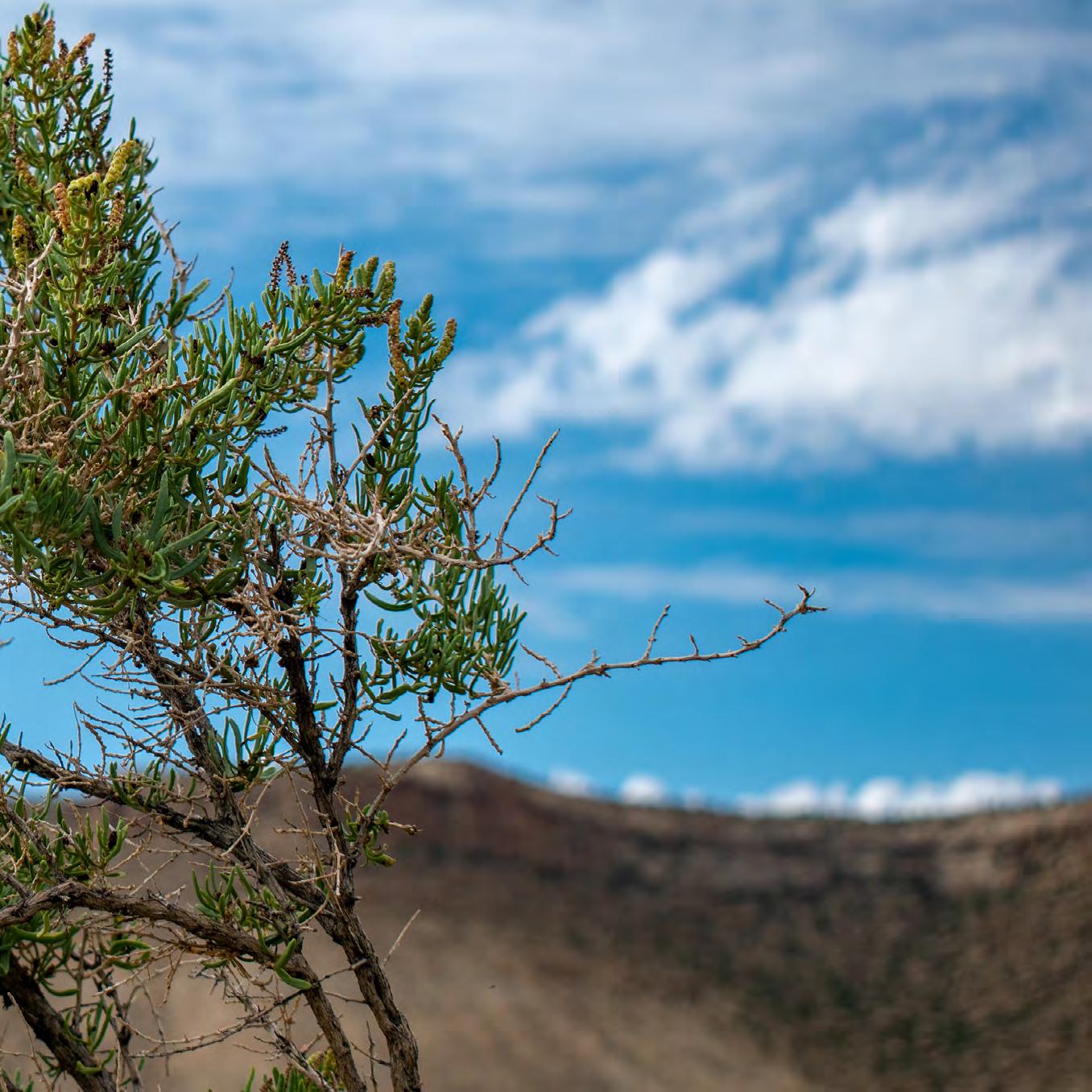
73 wíssiv káav
on childhood then and now
tüvüpüa:
We played with the things that grew up in the mountains. We played in the water and little springs that came out of the ground.
~ Jane
Lehi
~
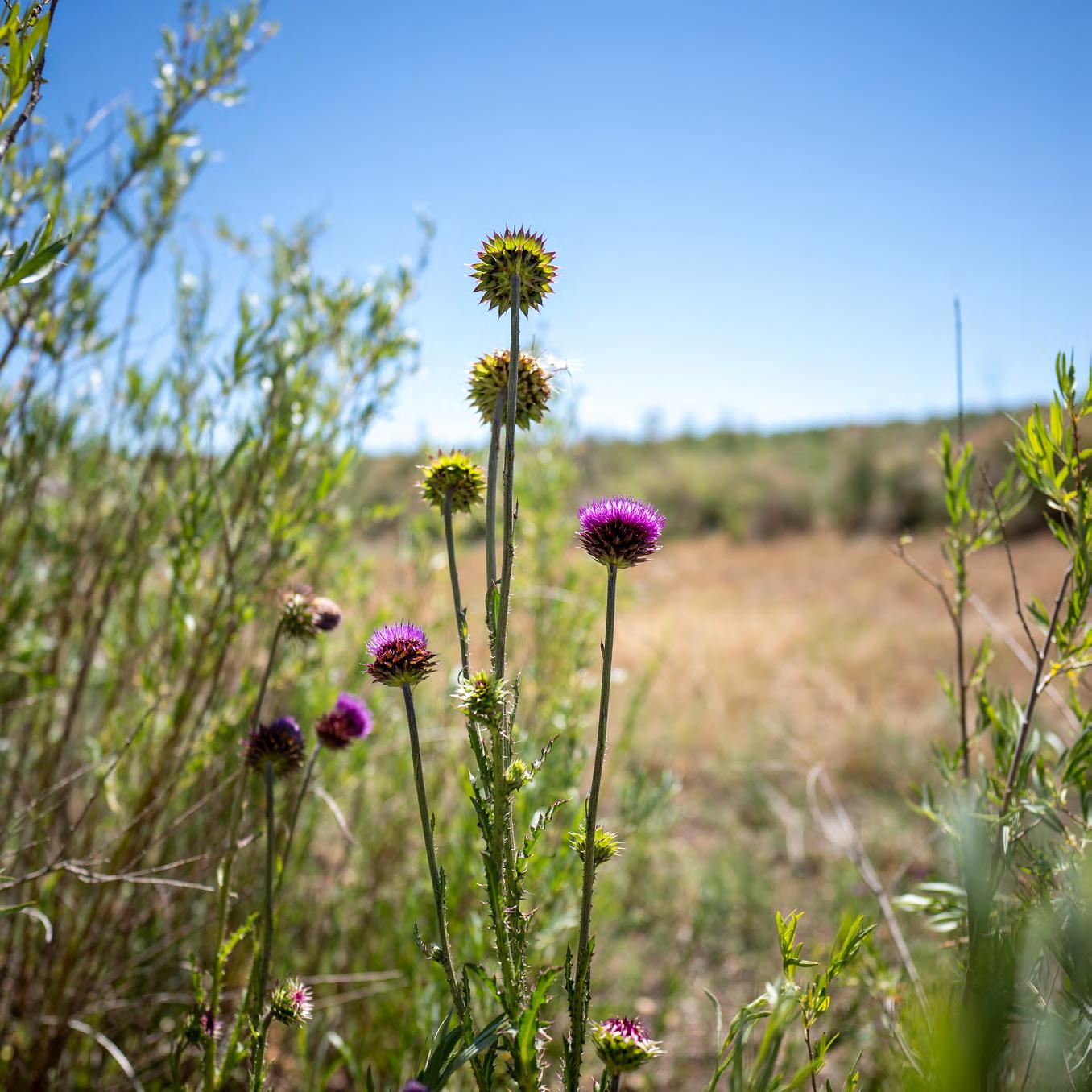
My grandparents had sheep and goats. As a child, I would herd the goats. I took them to pasture in the mountains, to the hills west of our house. I also used to take them over to the canyon. Goats and sheep, riding on a horse. We had horses. My grandparents kept them. I would go herding all day. I left in the morning and I came back in the afternoon. Then I would help my grandparents with the horses.
~ Emily Whiteman ~
75 wíssiv káav tüvüpüa: a changing environment

the grand outdoor belonged to the children.
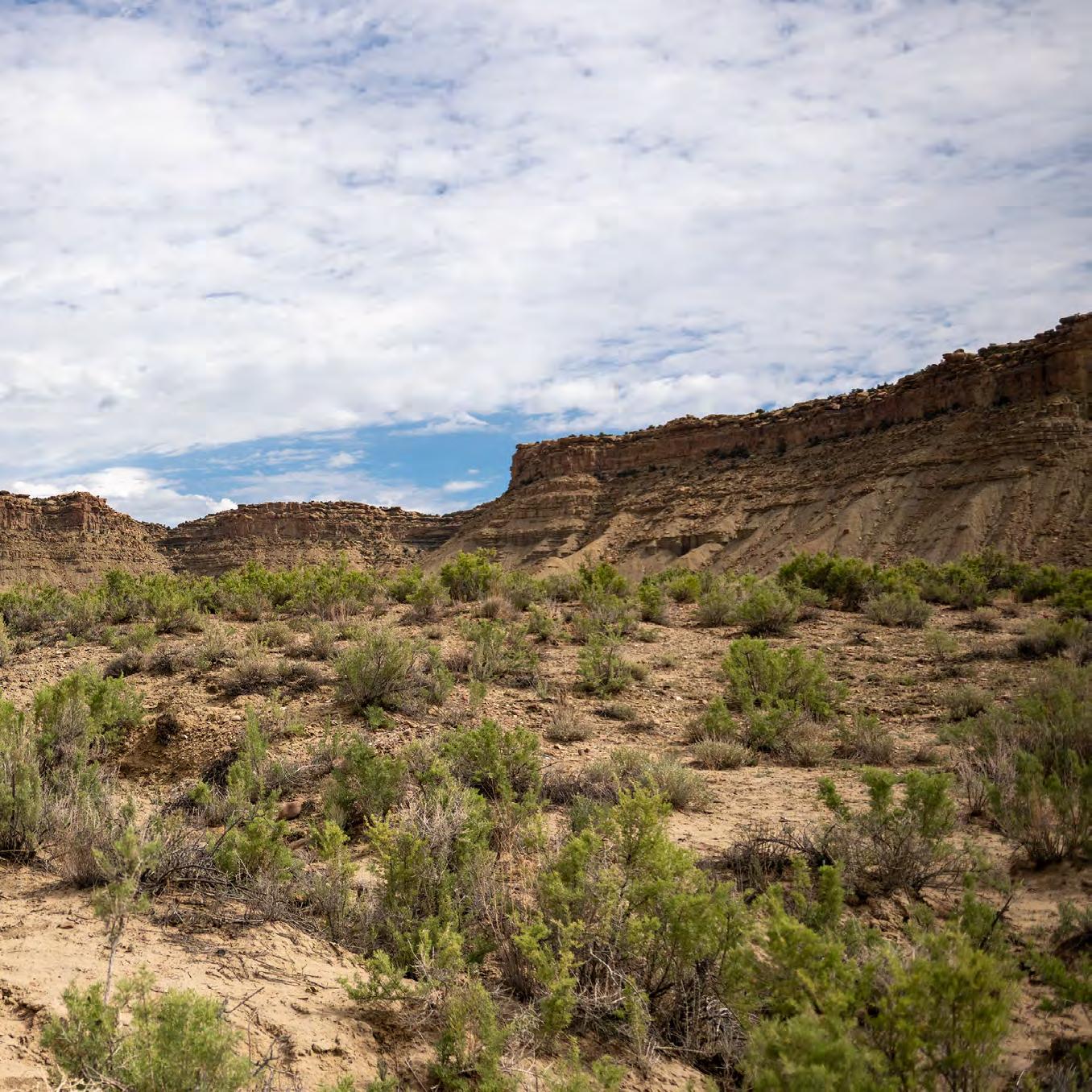
78 ute mountain lands: on childhood then and now
Most of the young people don’t know about wild onions, or gathering wild berries and food. Or chokecherries. They don’t eat them.
~ Emily Whiteman ~
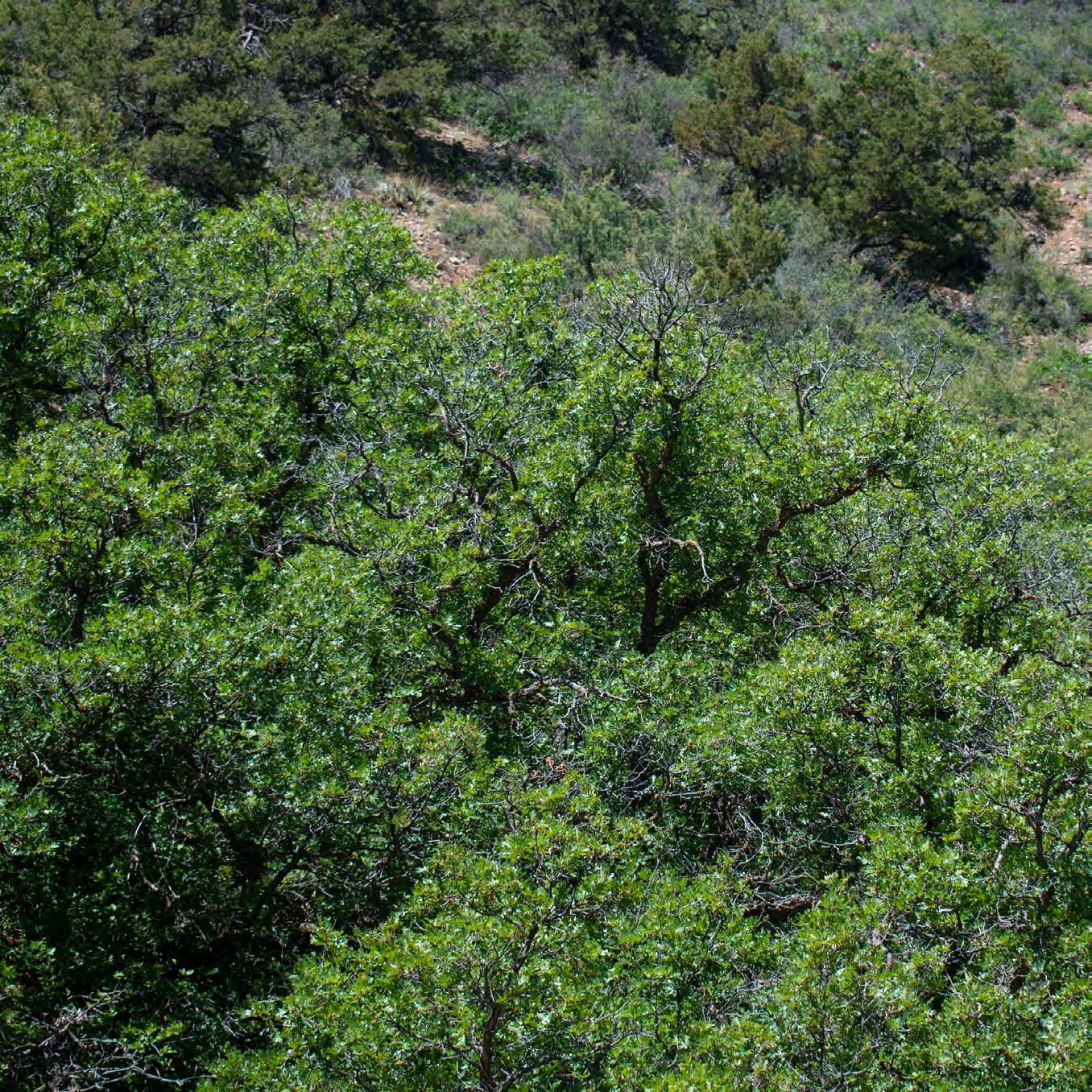
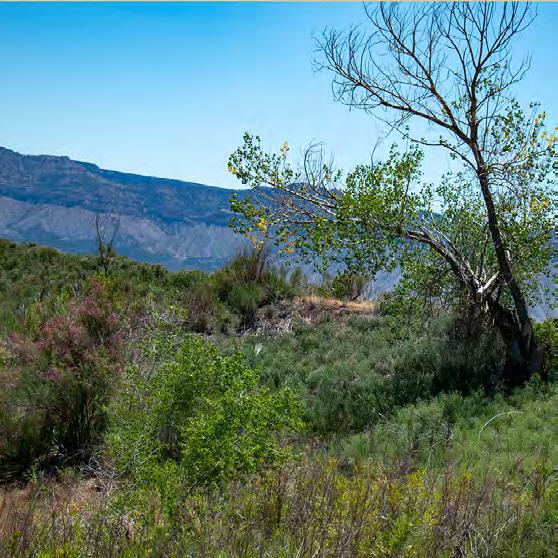


81 wíssiv káav tüvüpüa: on childhood then and now

That’s what our time was like.
There weren’t a lot of toys to play with. My brothers would have marbles and they would play them. Who’s going to win and who’s going to lose? They would make that ring really big and play all day. When we were shepherding, we spent the time chasing after rabbits or after anything that was moving, even squirrels. That’s what our time was like.
~ Jane Lehi ~
83 wíssiv káav tüvüpüa: on childhood then and now

My grandparents would take me to the carnival and I would go look around. They themselves didn’t really care for the carnival. They would just wait in the car for me, until it was time to go back home.
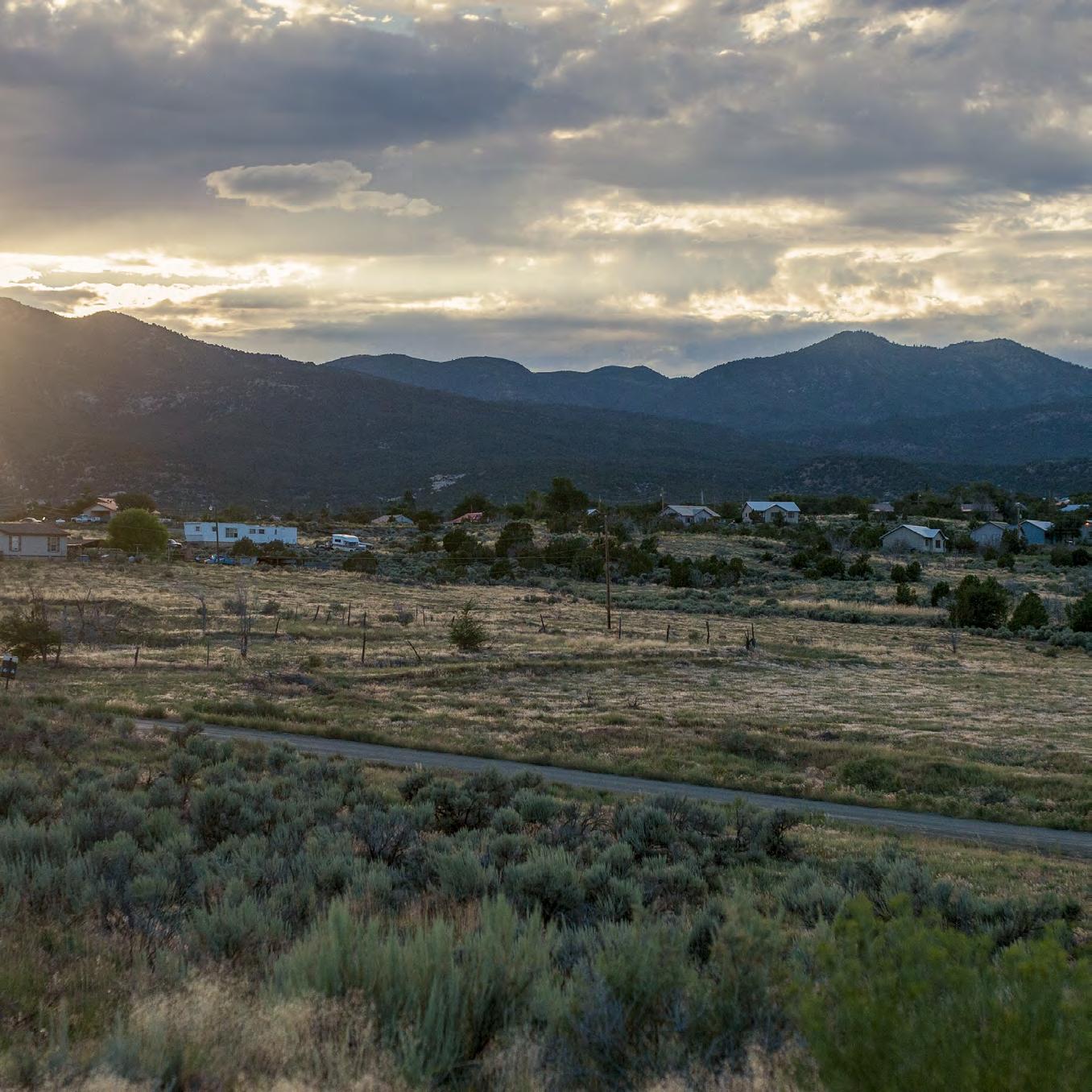
85 wíssiv káav tüvüpüa: on childhood then and now
When I was small, we did a lot of traveling to my grandparents.
~ Emily Whiteman ~
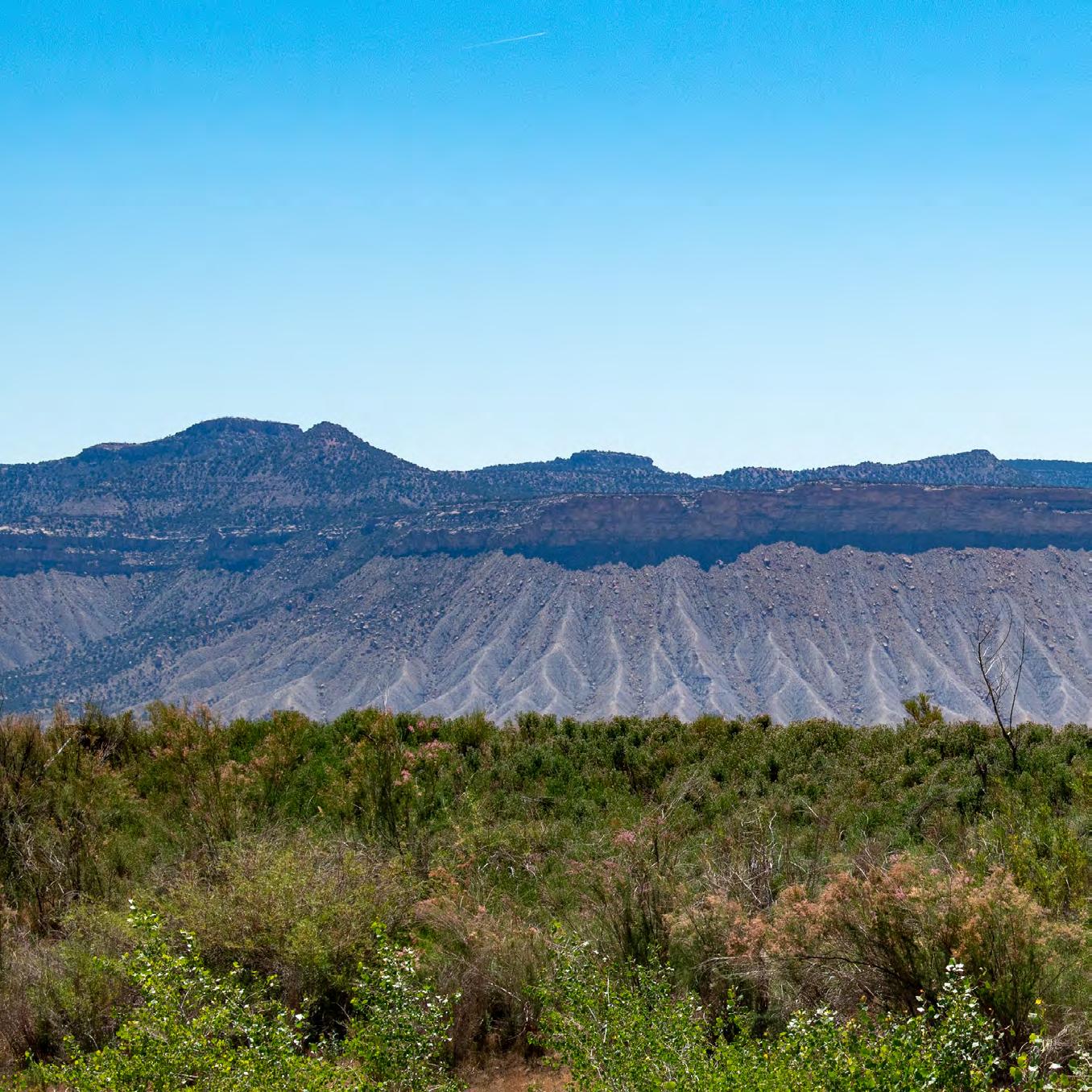

My grandparents traveled to Utah to go see the Bear Dance. They had friends there that we would visit.
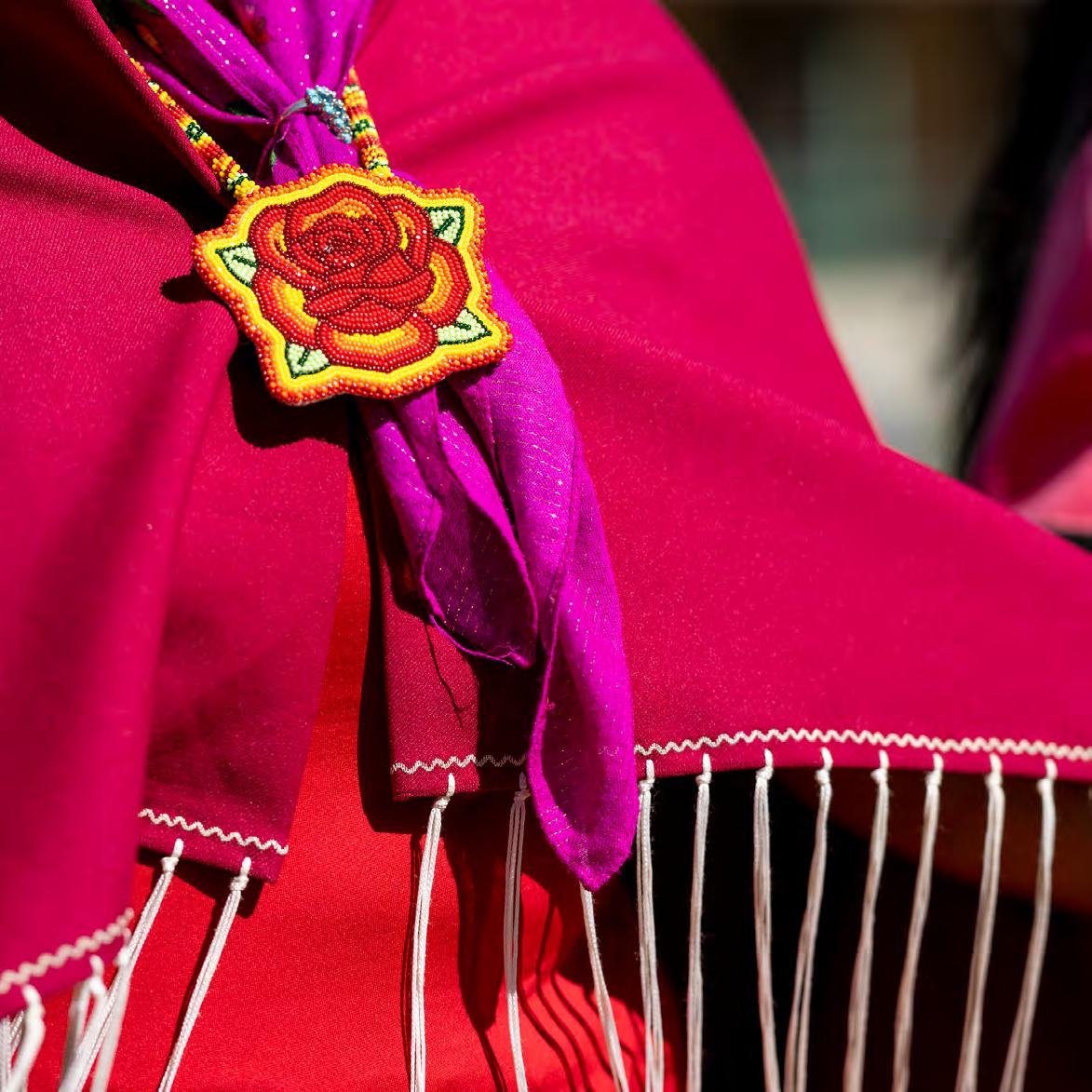 ~ Emily Whiteman ~
~ Emily Whiteman ~
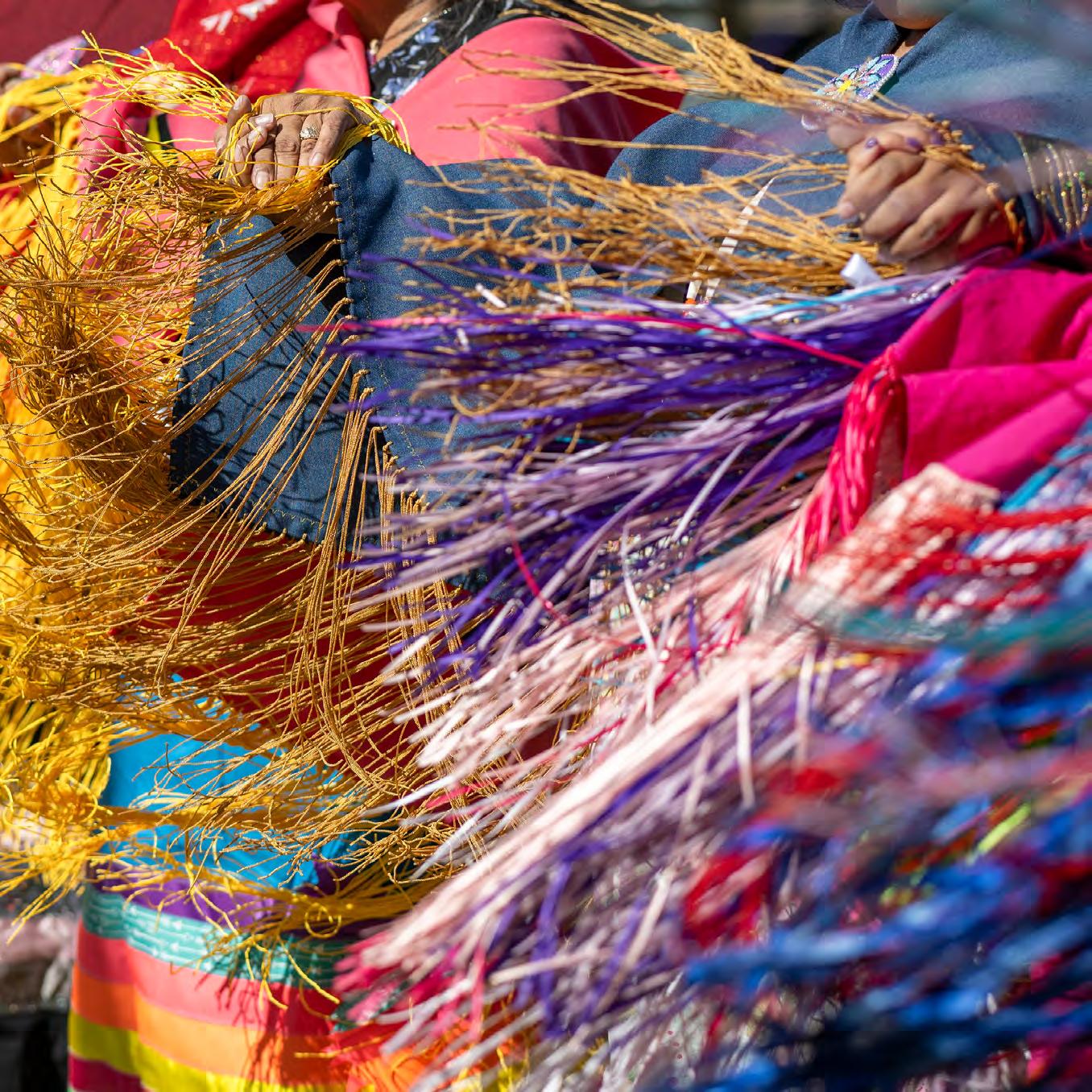
89 wíssiv káav tüvüpüa: on childhood then and now
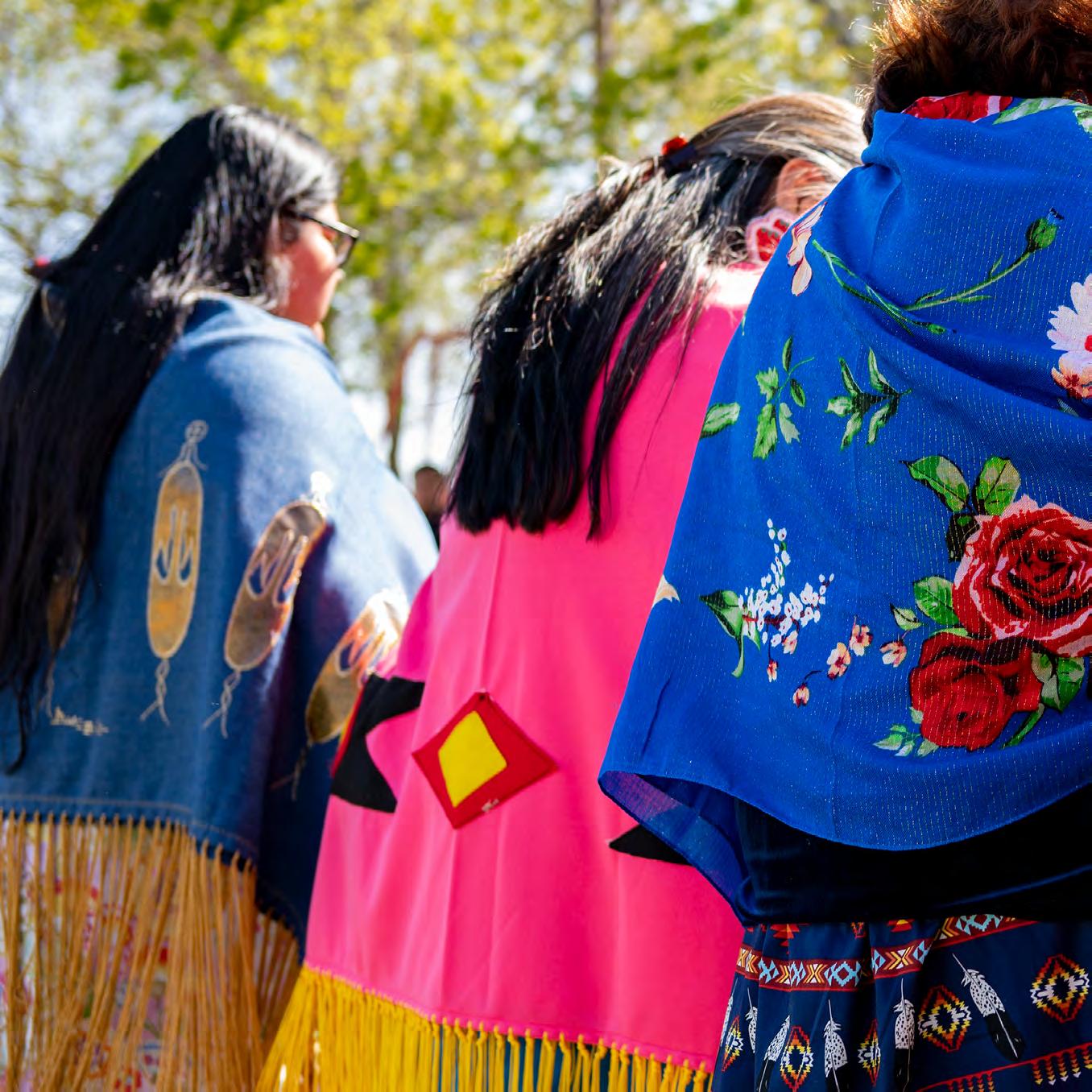
We traveled to Sundance. I helped my grandmother cook, do things for her. My grandmother’s sister always cooked outside. She would come and visit and stay there.
~ Emily Whiteman ~

91 wíssiv káav tüvüpüa: on childhood then and now

92 ute mountain lands: on childhood then and now

94 ute mountain lands: on childhood then and now
Today, the kids don’t do much. You don’t see them outside.
95 wíssiv káav tüvüpüa: on childhood then and now
They’re inside, watching TV. Or, they are on their phones.
~ Jane Lehi ~
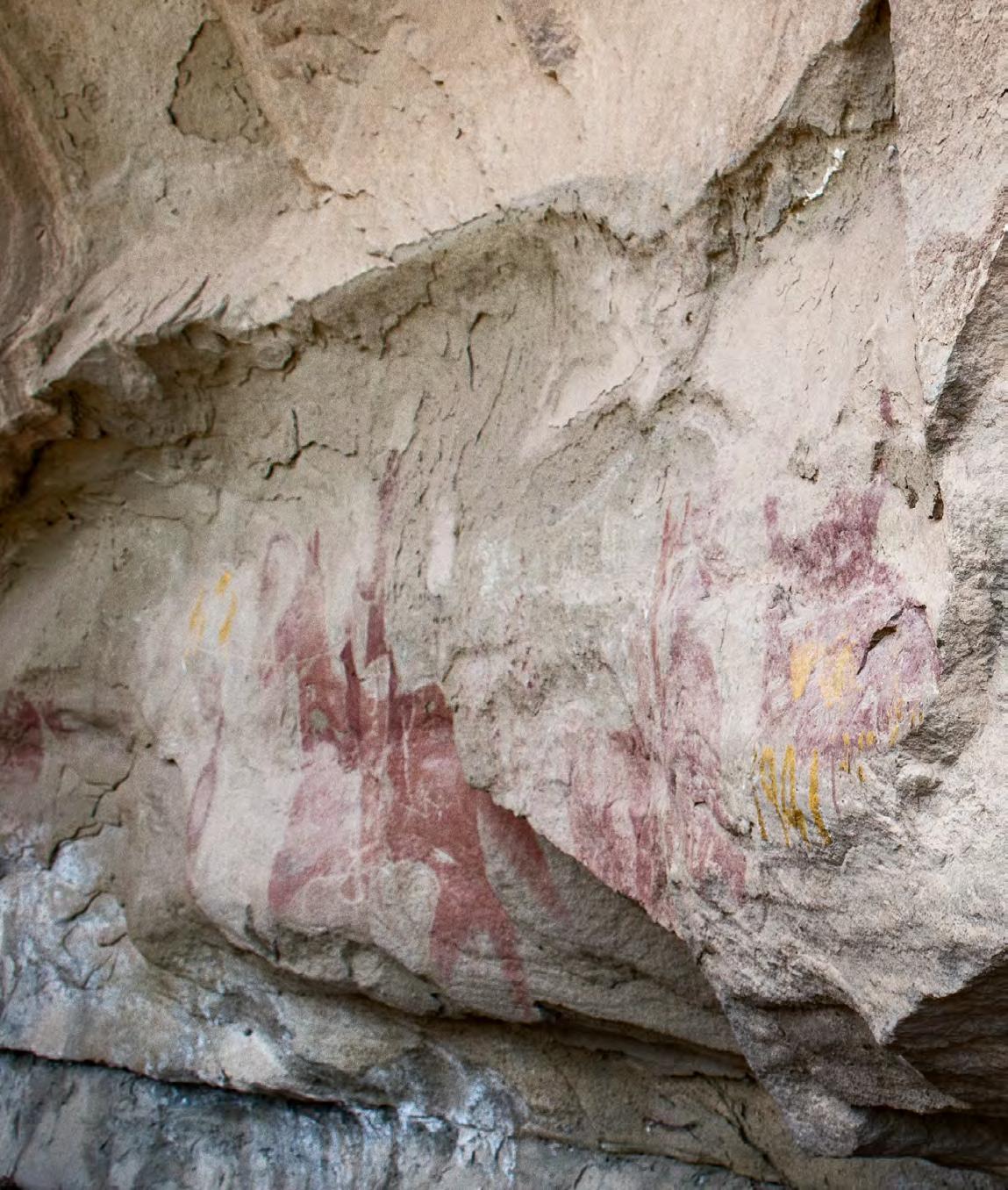
CHAPTER 3
Family ties and life changes
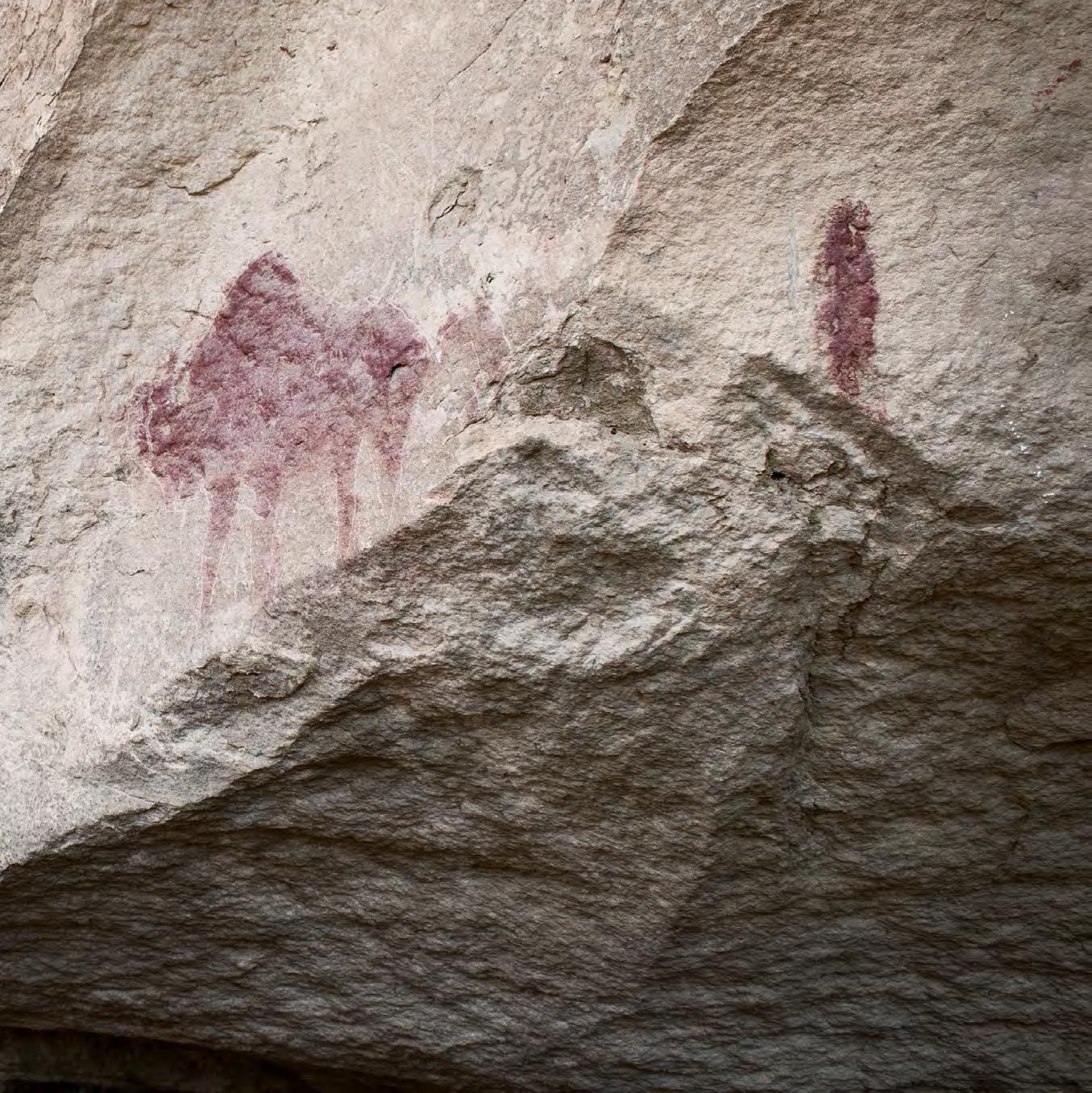
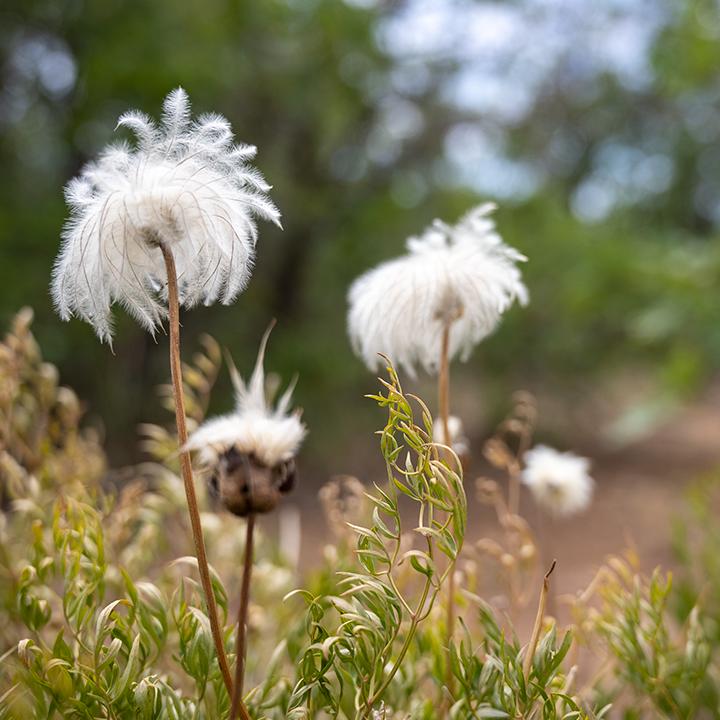
On my dad’s side we have Chief Jack House – my paternal grandfather. House was his family name. My paternal grandmother was Flora Ketcham. My great-grandfather was Ace House.
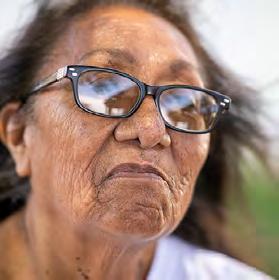 – Loma Root House
– Loma Root House
99 wíssiv káav tüvüpüa: family ties and life changes
Fa MILY TIES a ND LIFE CH a NGES
 chief jack house mounted on horseback, ca 1920.
chief jack house mounted on horseback, ca 1920.
In the 1960s, Chief Jack House formed the Ute Mountain Tribal Park.
it kept the canyons in native hands, while allowing 12 tourists per day to see the park’s backcountry ruins and murals. the sites are preserved by keeping them relatively hard to get to. to visit them, you must make a reservation, pay a fee, and be accompanied by a ute guide.
source: nationalgeographic.com/travel/article/ute-mountaintribal-park-traveler
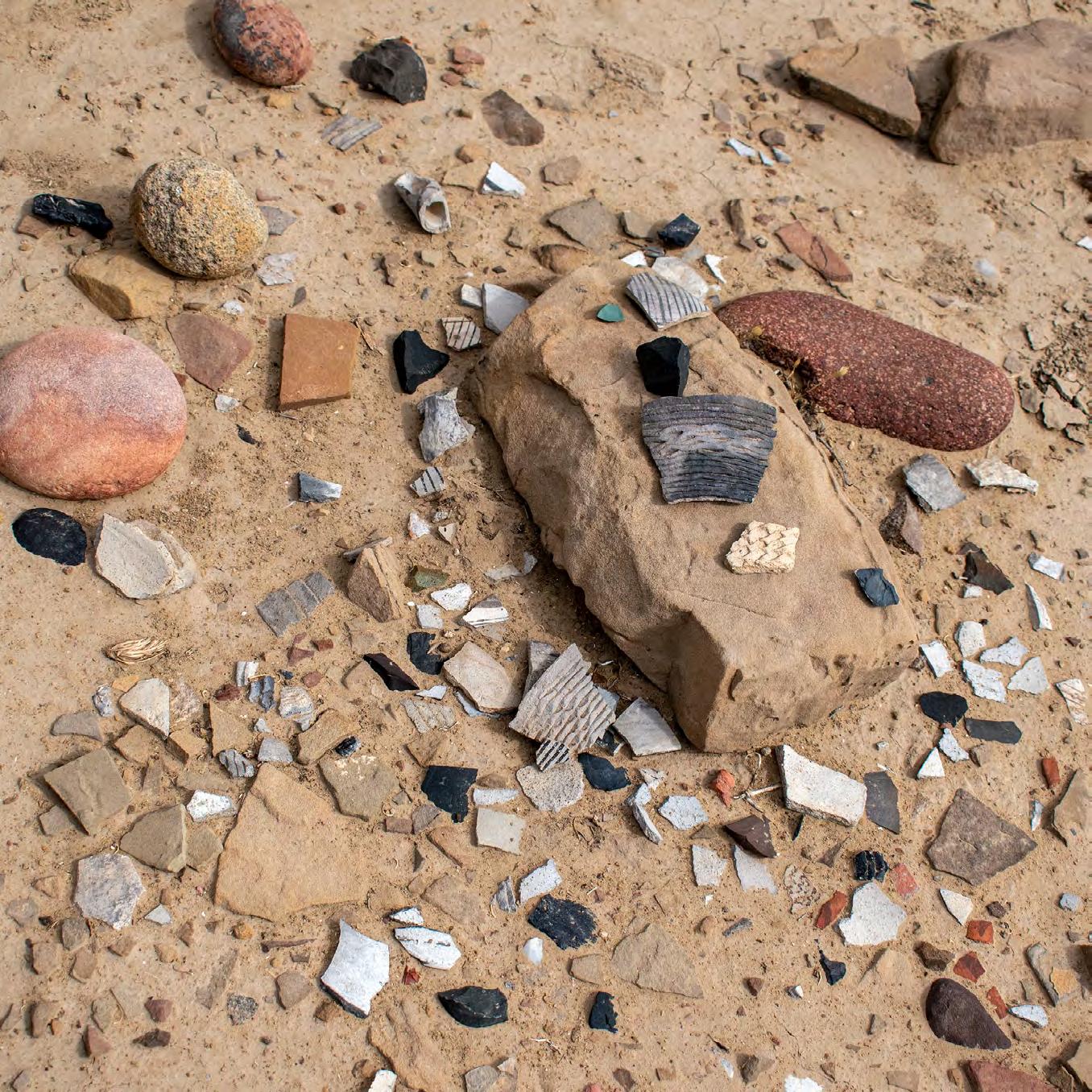
101 wíssiv káav tüvüpüa: family ties and life changes
102 ute mountain lands: family ties and life changes
My mother named all her children with her maiden family name, which is Root.
~ Loma Root House ~
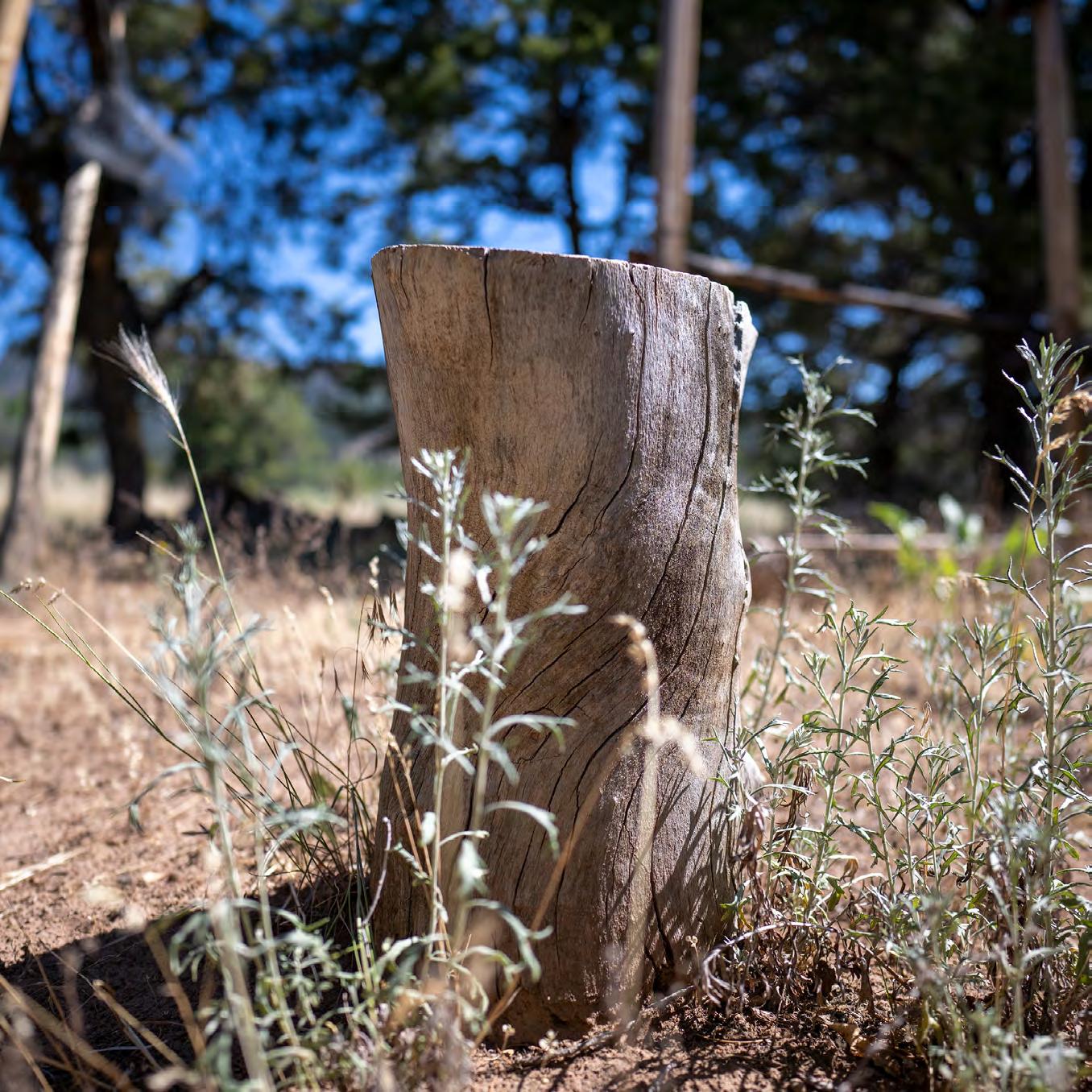
103 wíssiv káav tüvüpüa: family ties and life changes

My maternal grandfather was from Southern Ute and his name was Julian Critters. But, he also had another name that he went by, and that was Tom Root Senior. My mother told me that he used to do the Sundance. One time, they hardly had any singers, so they had to pull him out from dancing and he would sing for them. My maternal grandmother’s name was Alberta Bluebird Deer.

105 wíssiv
káav tüvüpüa: family ties and life changes
~ Loma Root House ~


107 wíssiv káav tüvüpüa: family ties and life changes
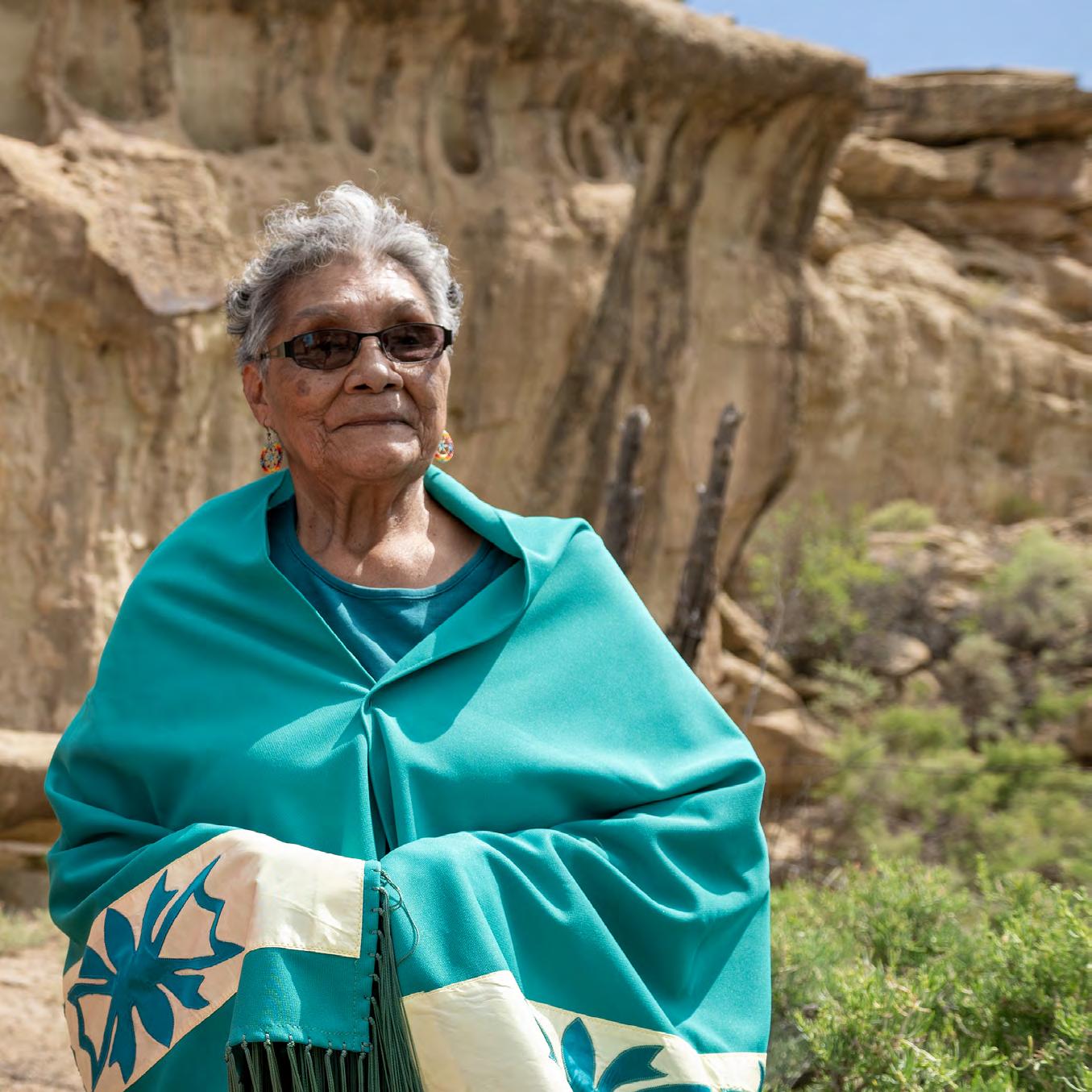 emily whiteman
emily whiteman
Paul Ute was my grandmother’s brother. He lived around the mountain too. He also had sheep. I would go stay with them as well. My mother lived around there with her husband. I played over there with my friend. Her name was Anna Lee Rabbit, but we called her both cousin and sister. We went back and forth between our place and their place.
109 wíssiv káav tüvüpüa: family ties and life changes
~ Emily Whiteman ~
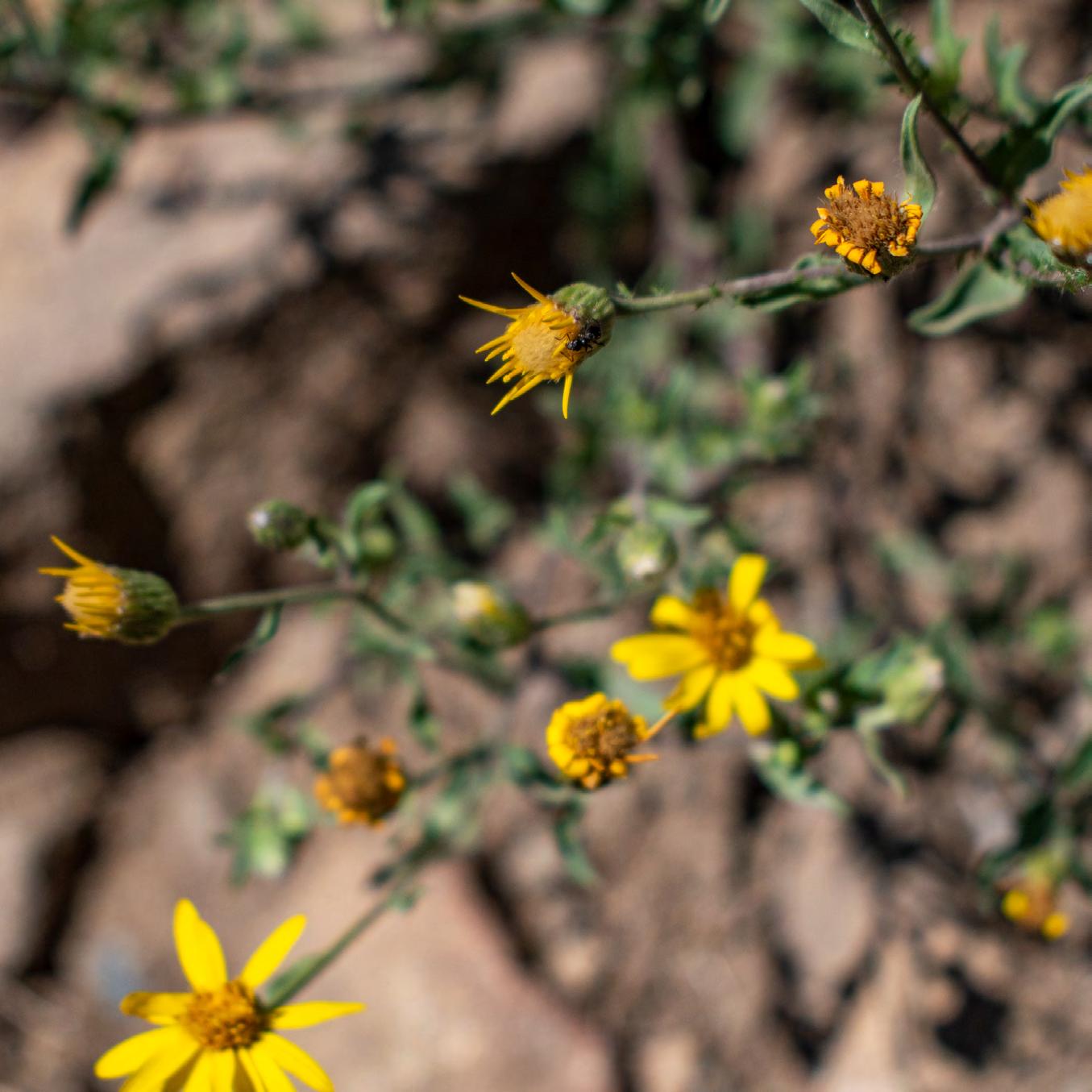
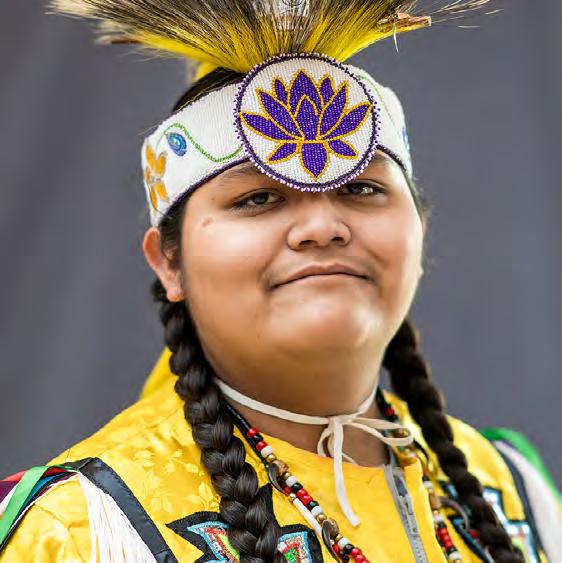
My other grandpa still had a wagon at that time. He used it to go back and forth. He lived around the mountain. I would go stay with his family too, when they lived on the mountain.
112 ute mountain lands: family ties and life changes
~ Emily Whiteman ~
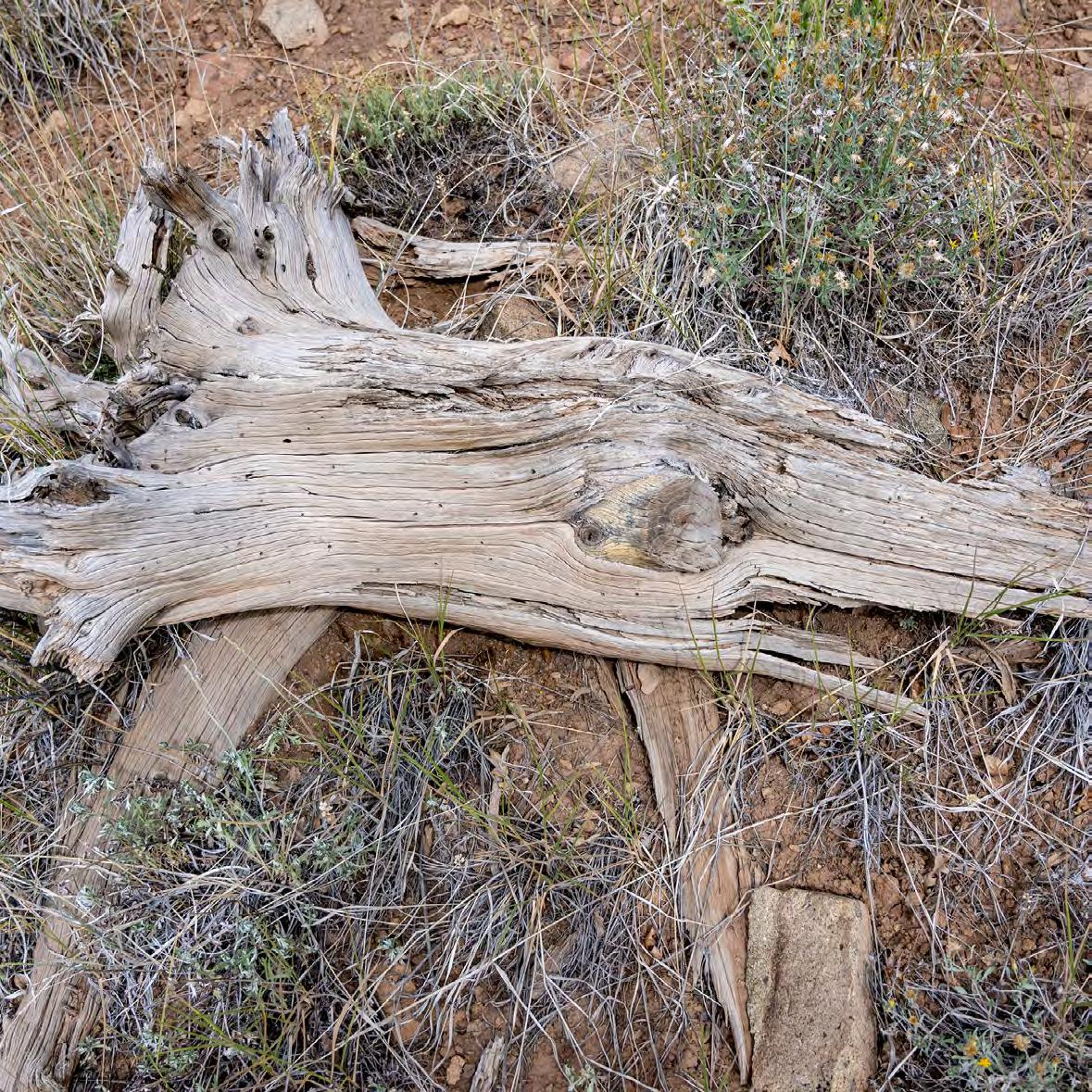


 opposite page: juanita plentyholes (left) and colleen cuthair (right) wearing traditional shawls.
opposite page: juanita plentyholes (left) and colleen cuthair (right) wearing traditional shawls.
It was good to be close to my family.
116 ute mountain lands: family ties and life changes
~ Jane Lehi ~
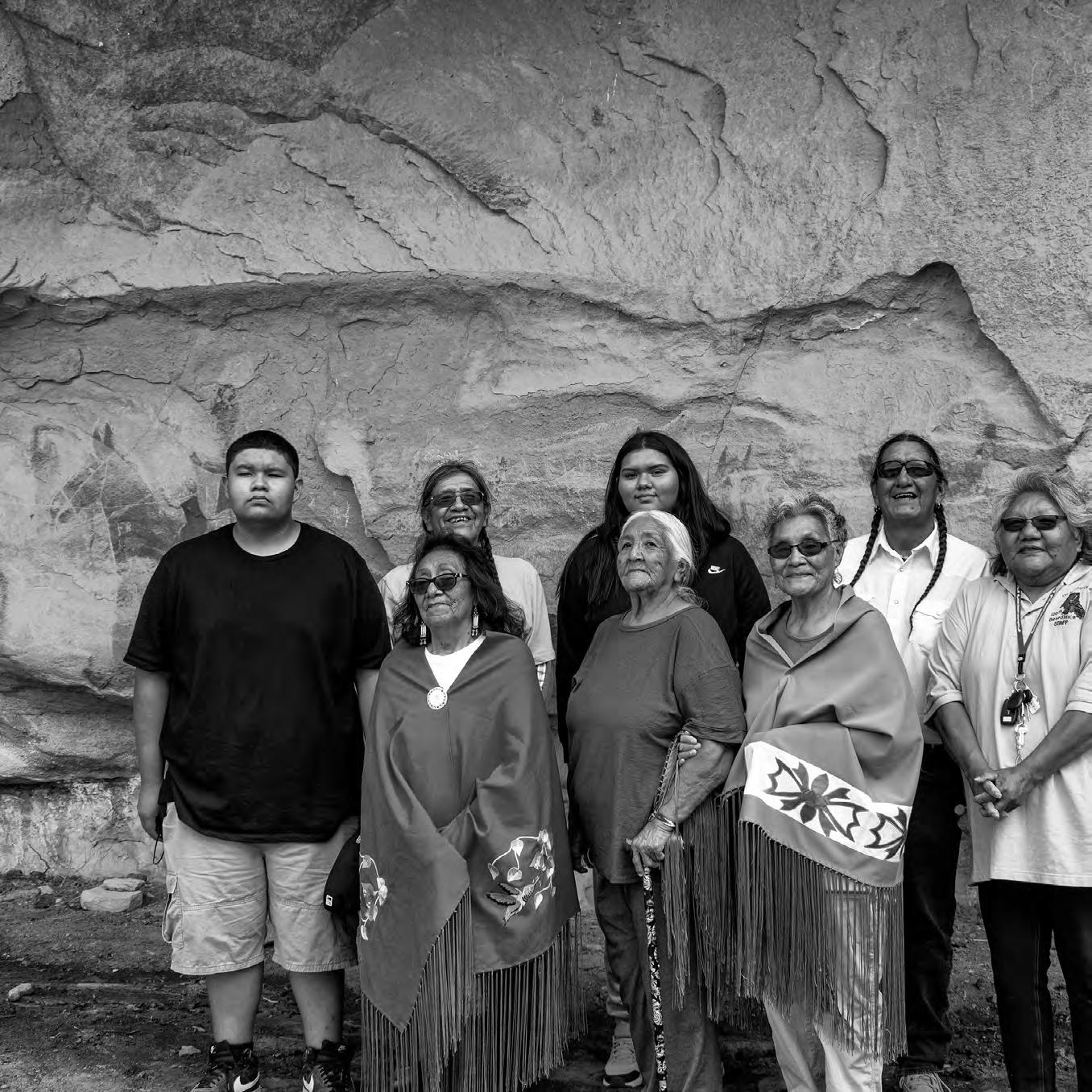
117 wíssiv káav tüvüpüa: family ties and life changes


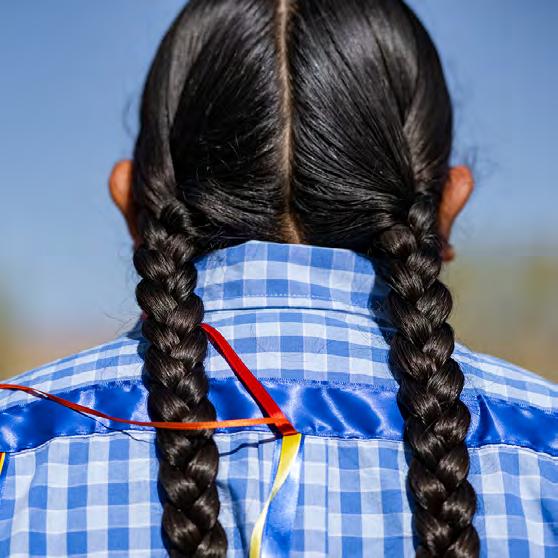

Today, we are all separated.
Today we are all scattered and we don’t really get along with our families. That time, a long time ago, we were a close family. We got along together. It was good to be a close-knit family, but now we are scattered. I don’t know if it makes anybody happy or not. But it made me happy to be with my family. All the things that we did together were very good.
~ Jane Lehi ~
121 wíssiv káav tüvüpüa: family ties and life changes

122 ute mountain lands: family ties and life changes
Now things have changed a lot. Nobody really lives in the mountains any more, like we used to. Nobody does that.
~ Emily Whiteman ~
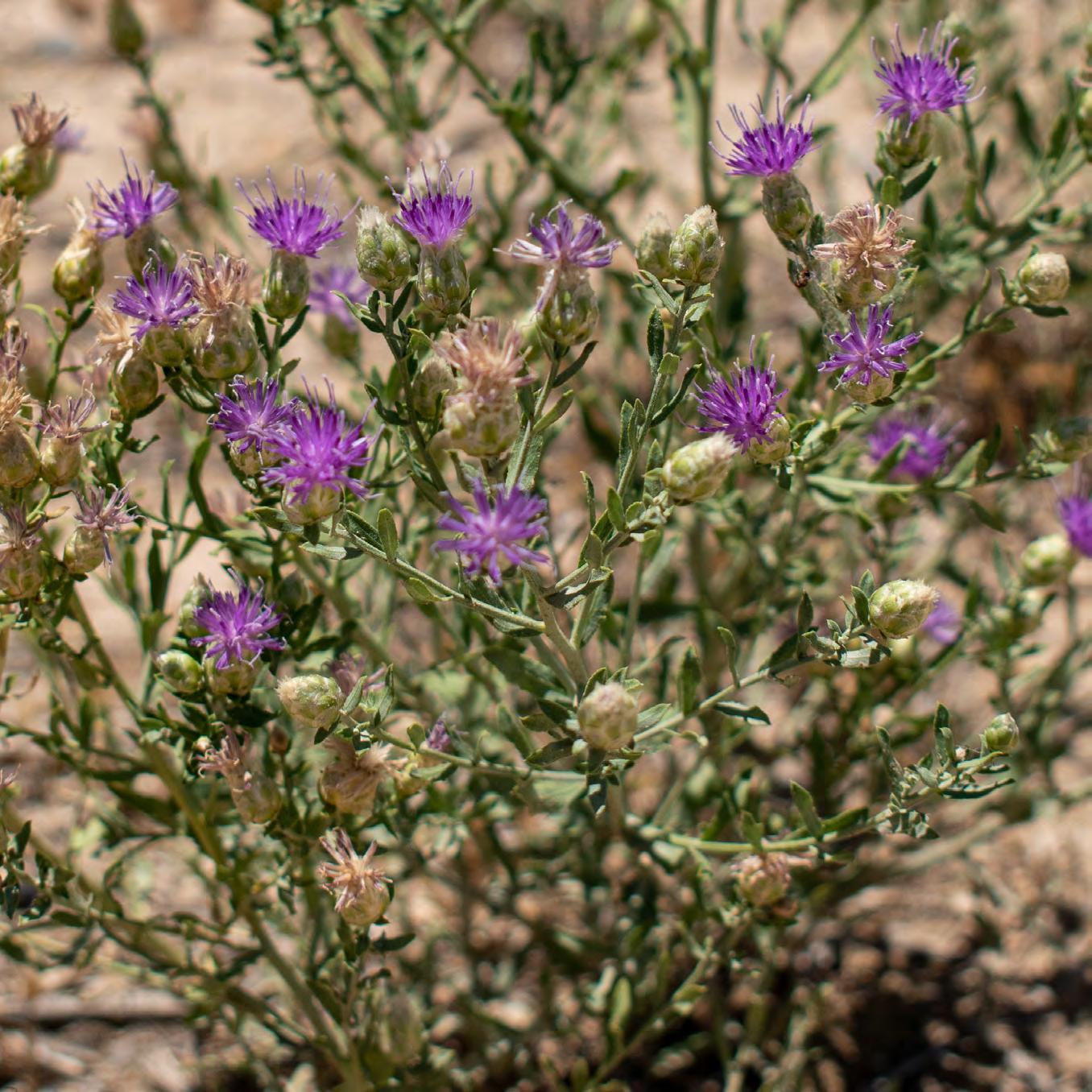
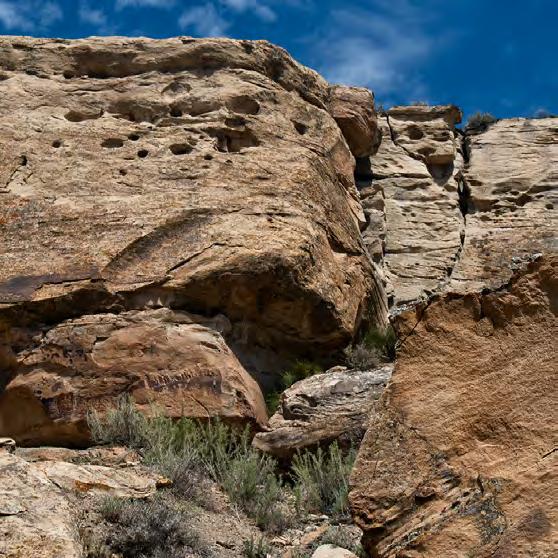
123 wíssiv
and life
káav tüvüpüa: family ties
changes
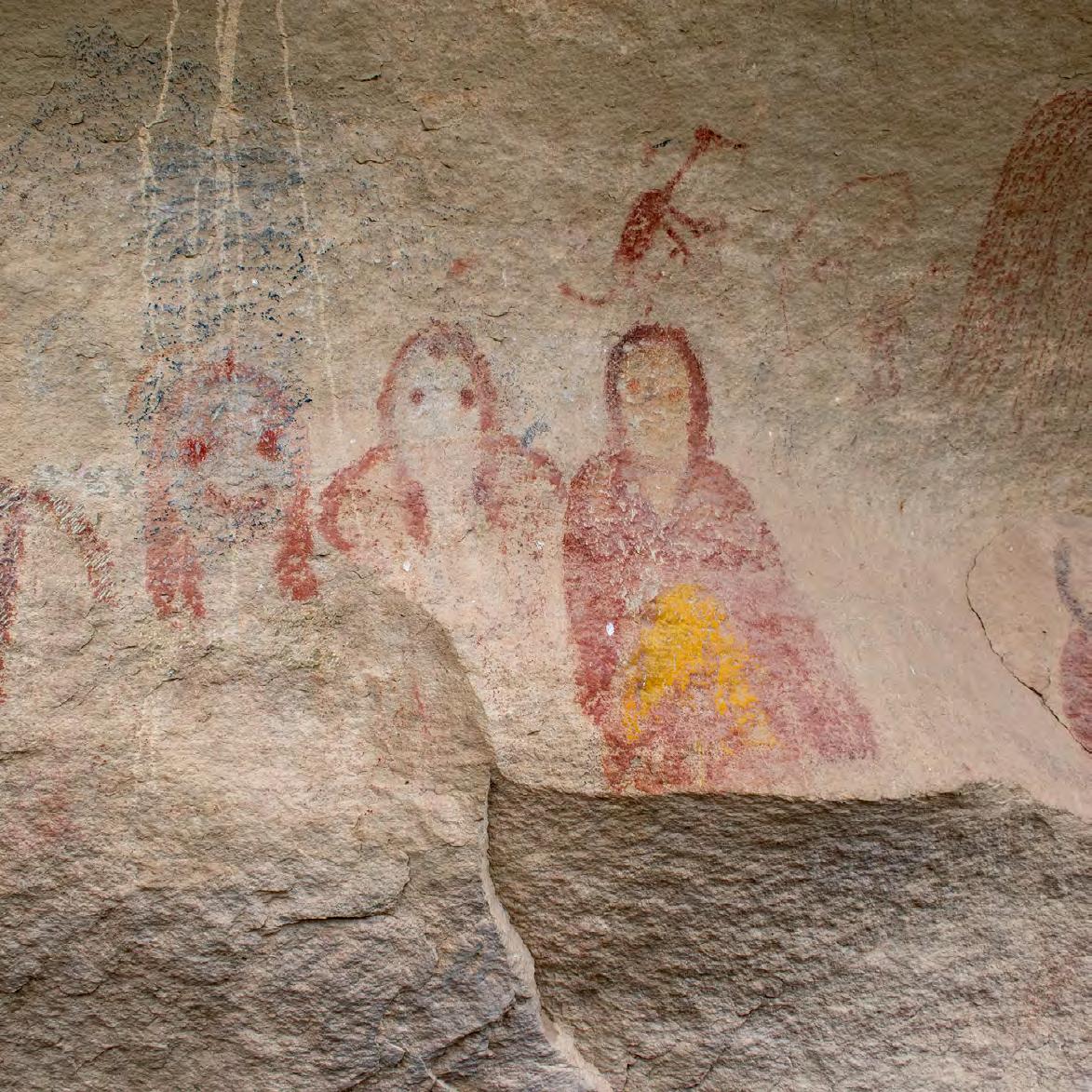
Our grandparents are not here anymore. We need to talk to them and ask questions. But they’re not here.
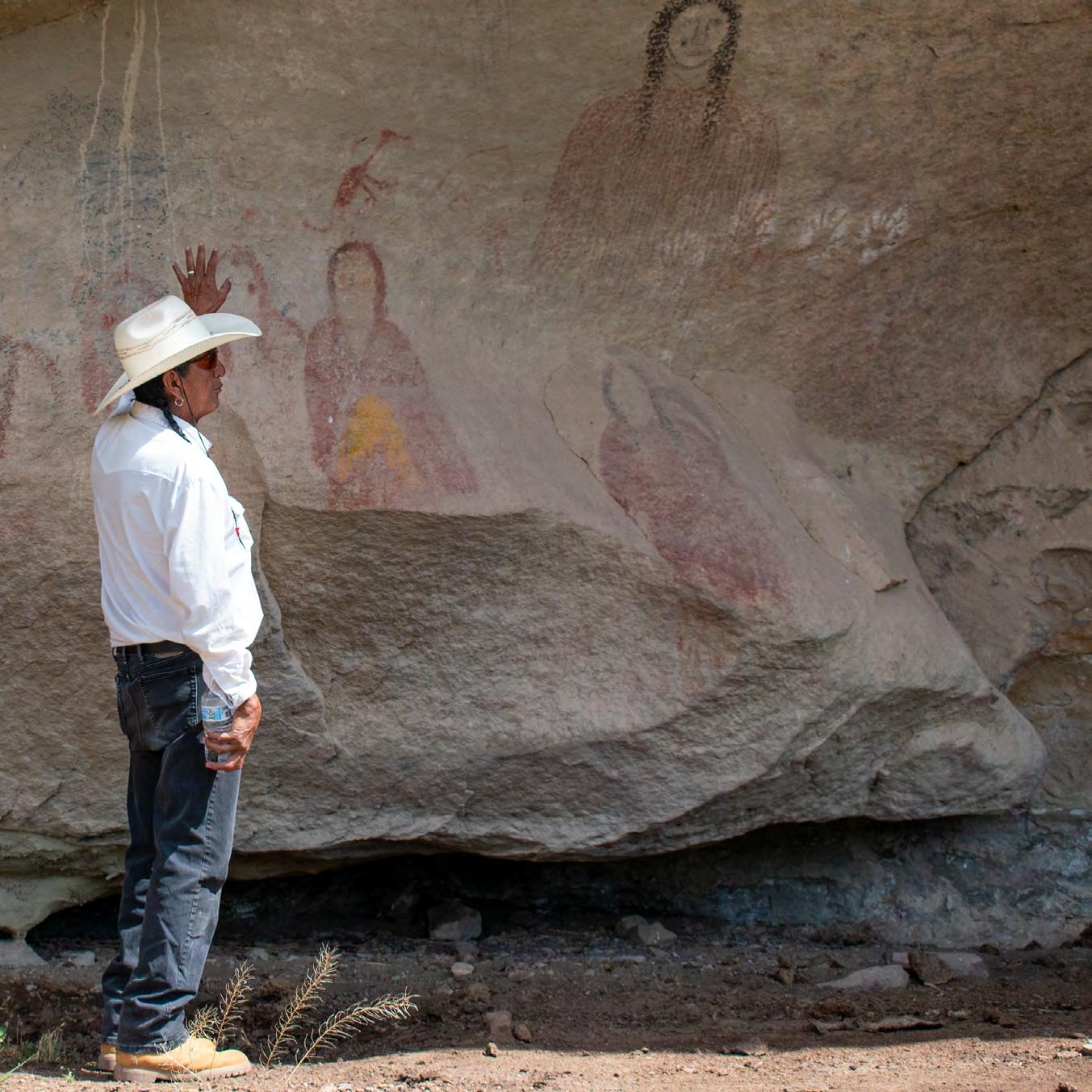 ~ Emily Whiteman ~
~ Emily Whiteman ~
125
wíssiv káav tüvüpüa: family ties
and life changes



We are the ones, the ‘acting grandparents’ nowadays. We’re the ones that answer to our grandkids now. Back then, the grandparents had all the answers. Now, we give the answers to our young – us, the ‘young kids’ – the best we can. It’s hard without our grandparents.
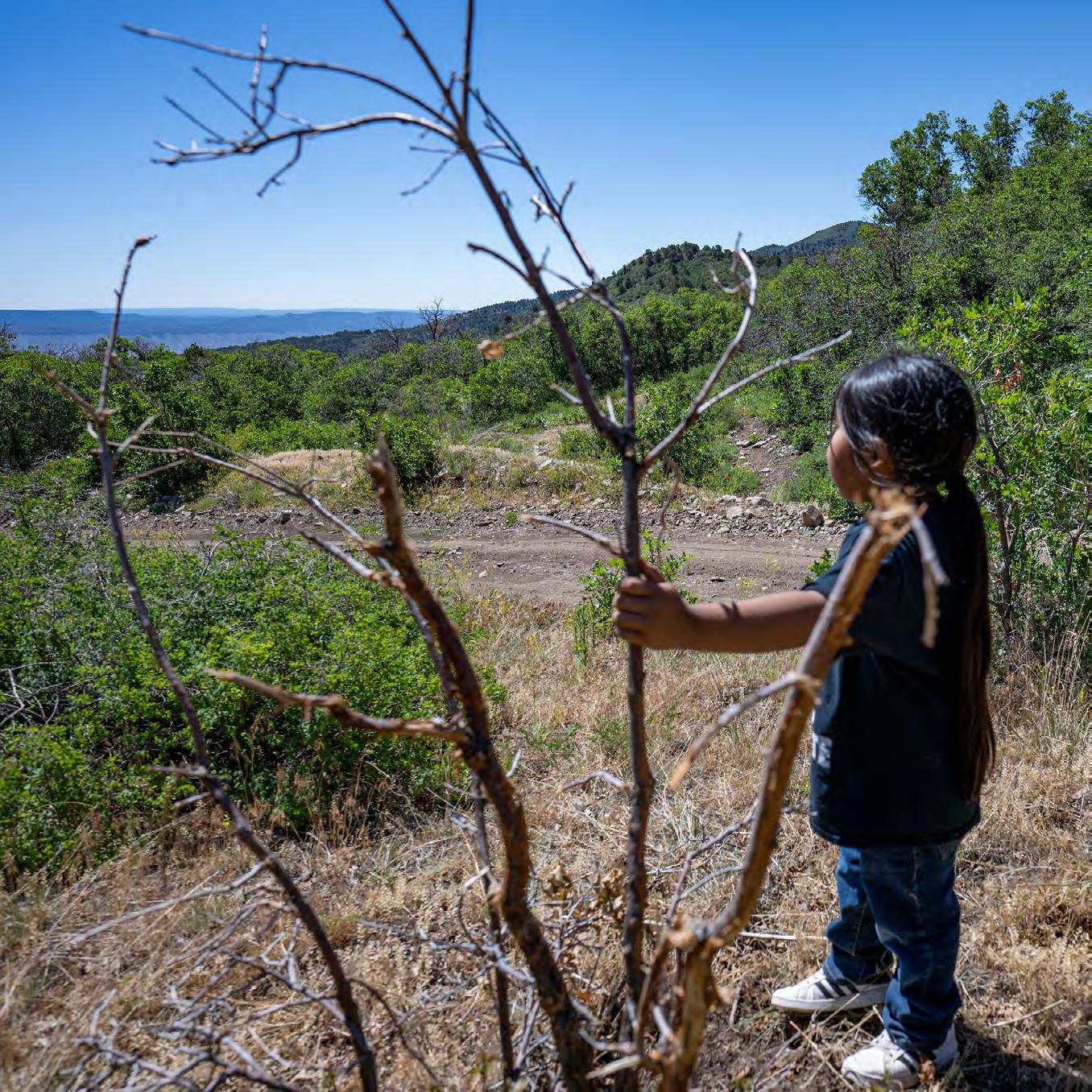
128 ute mountain lands: family ties and life changes
~ Emily Whiteman ~
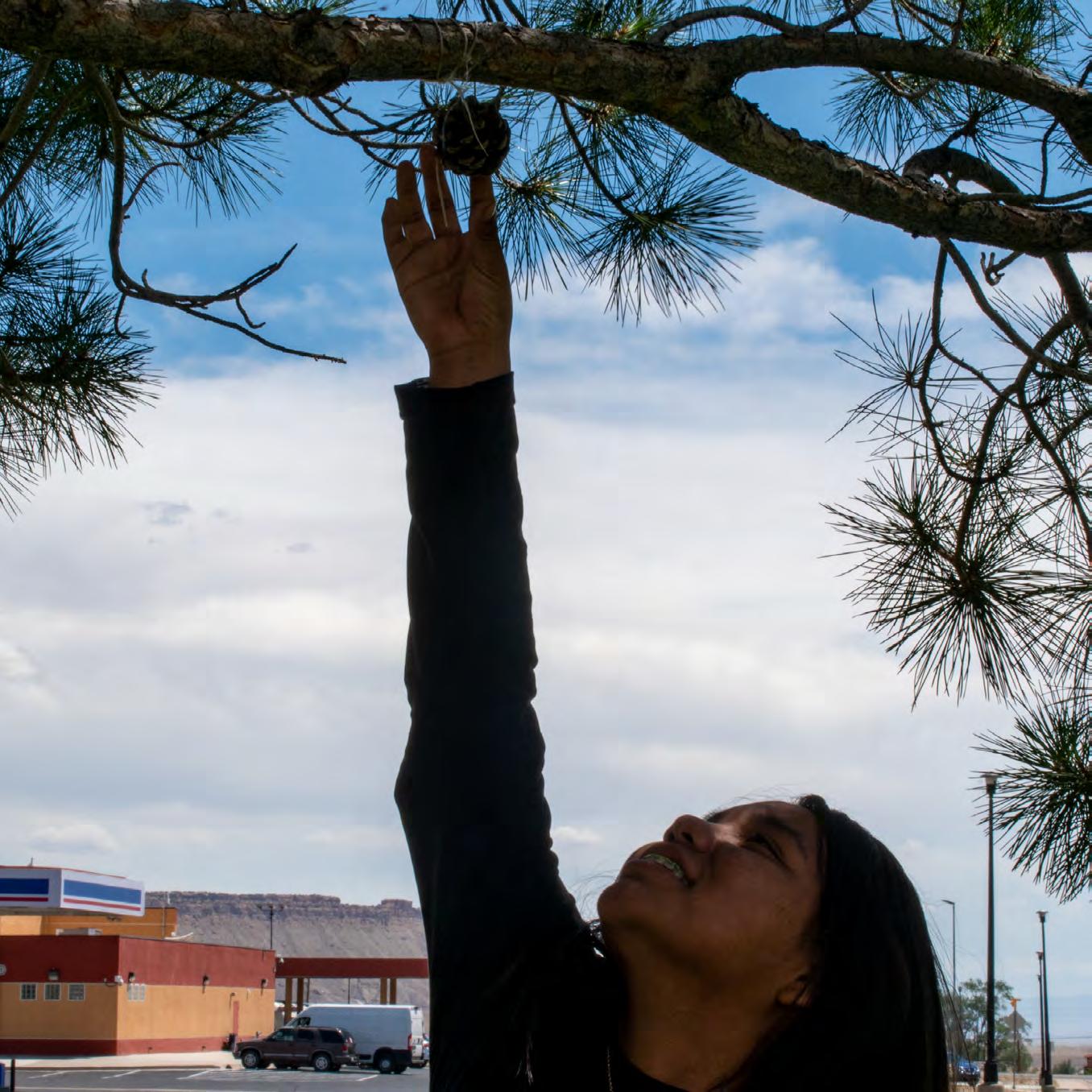
129 wíssiv káav tüvüpüa: family ties and life changes

CHAPTER 4
Seasonal living
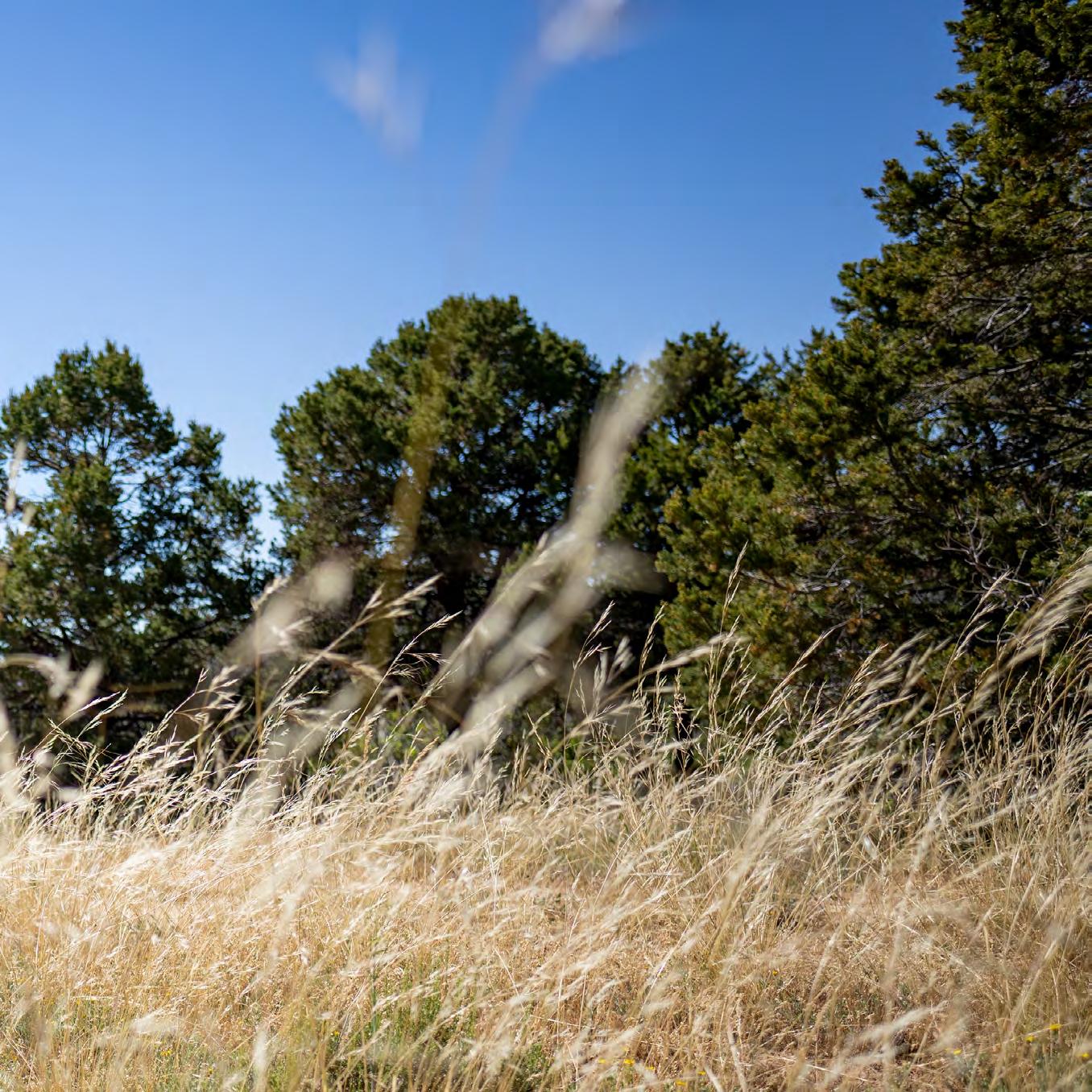

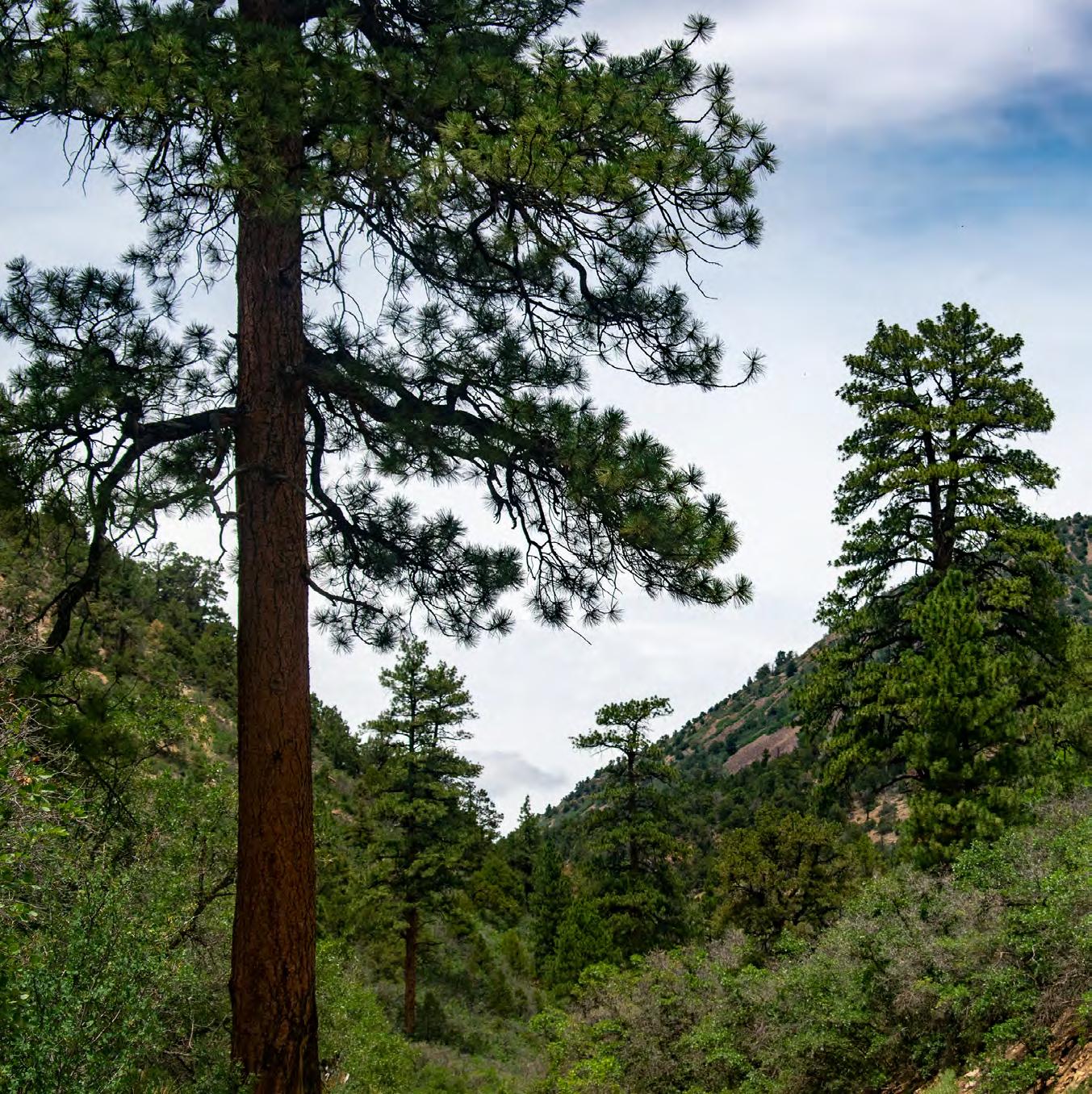
When we moved to the mountains in springtime, we took our sheep and goats and the horses up the mountain with us. We would stay up there around the Elbow. That’s where our sheep camp was and where we would stay.
~ Emily Whiteman ~
134 ute mountain lands: seasonal living


There were some other Ute families that lived up there too. Sometimes we would go visit them, stay with them, then go back home. We did a lot of riding.
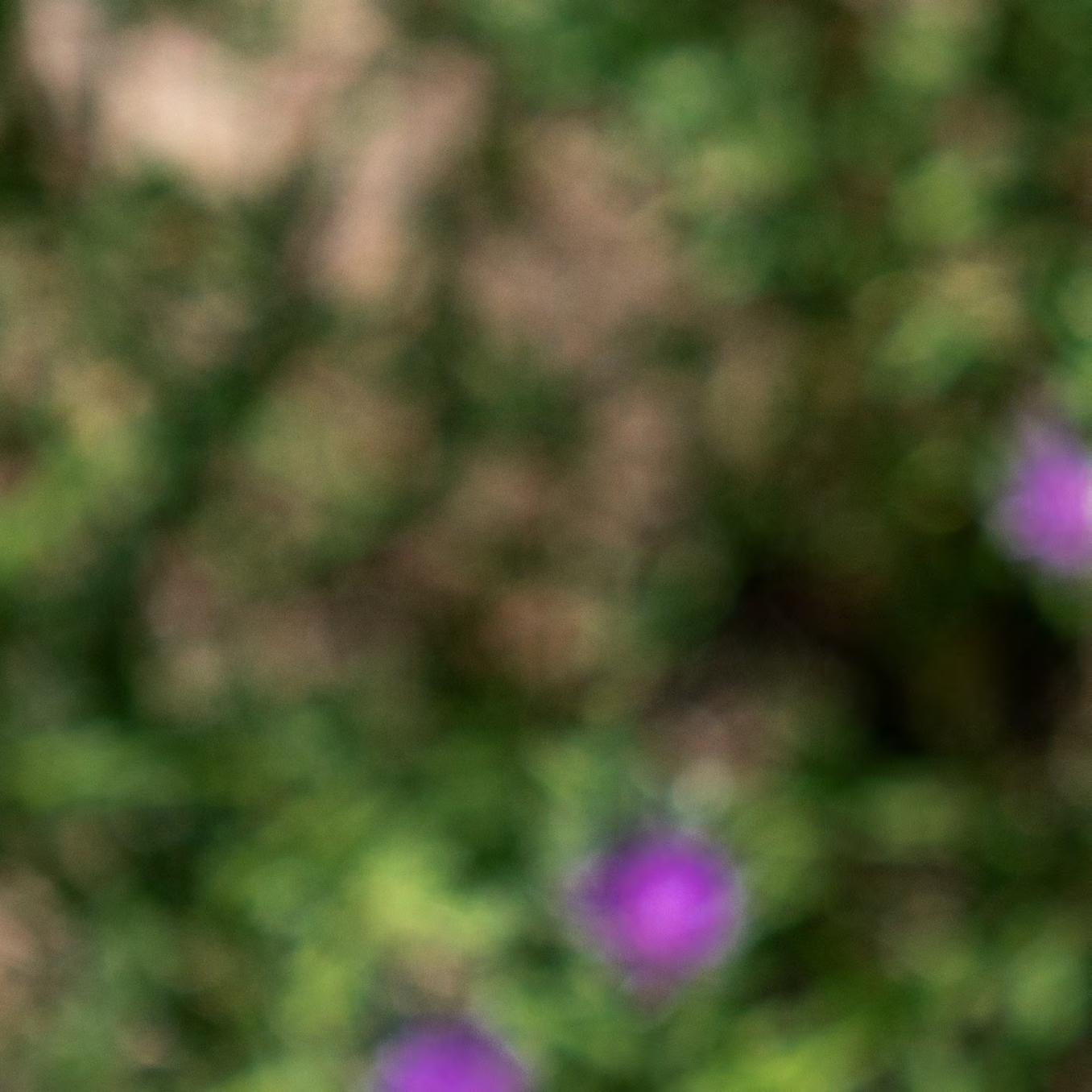
137 wíssiv káav tüvüpüa: seasonal living
~ Emily Whiteman ~
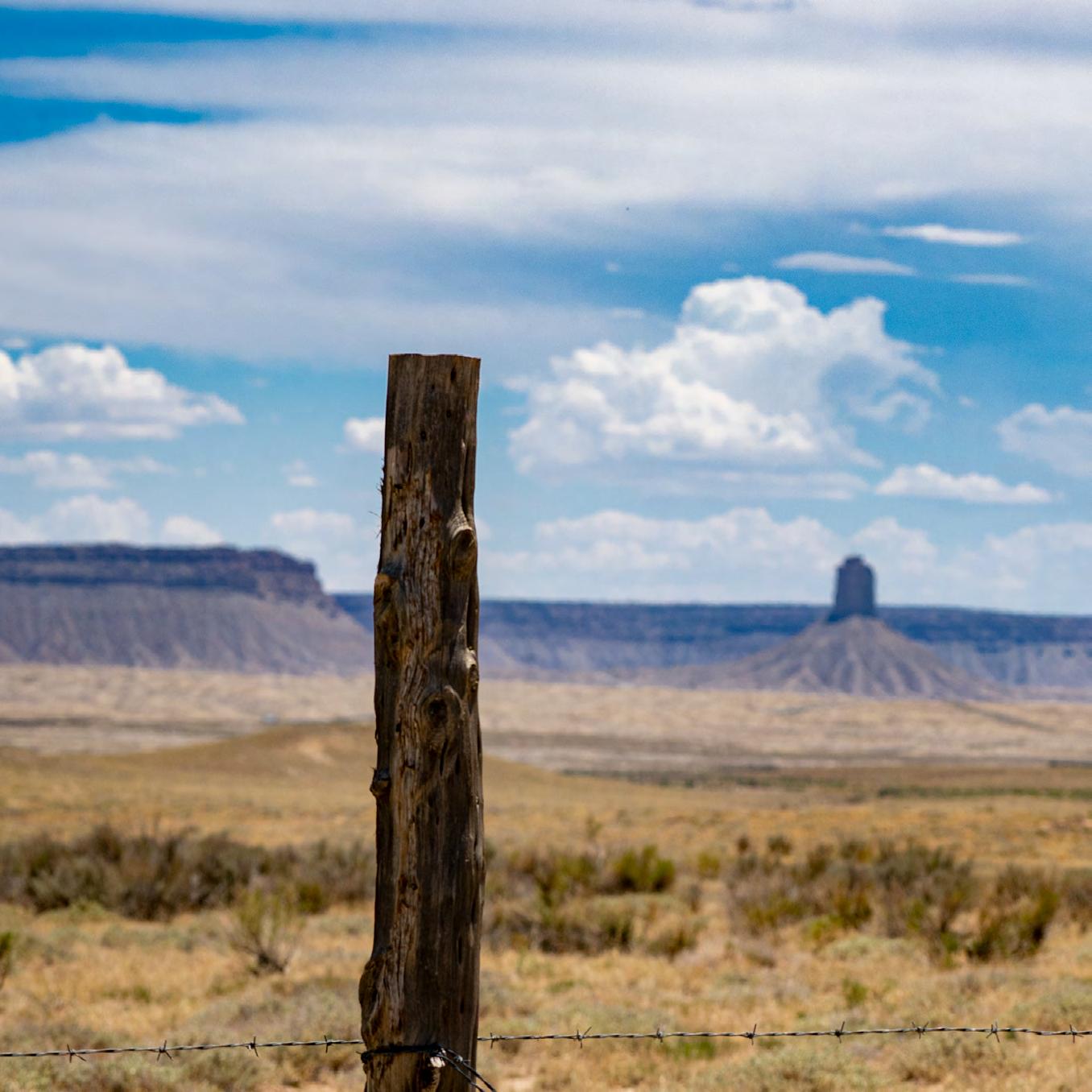

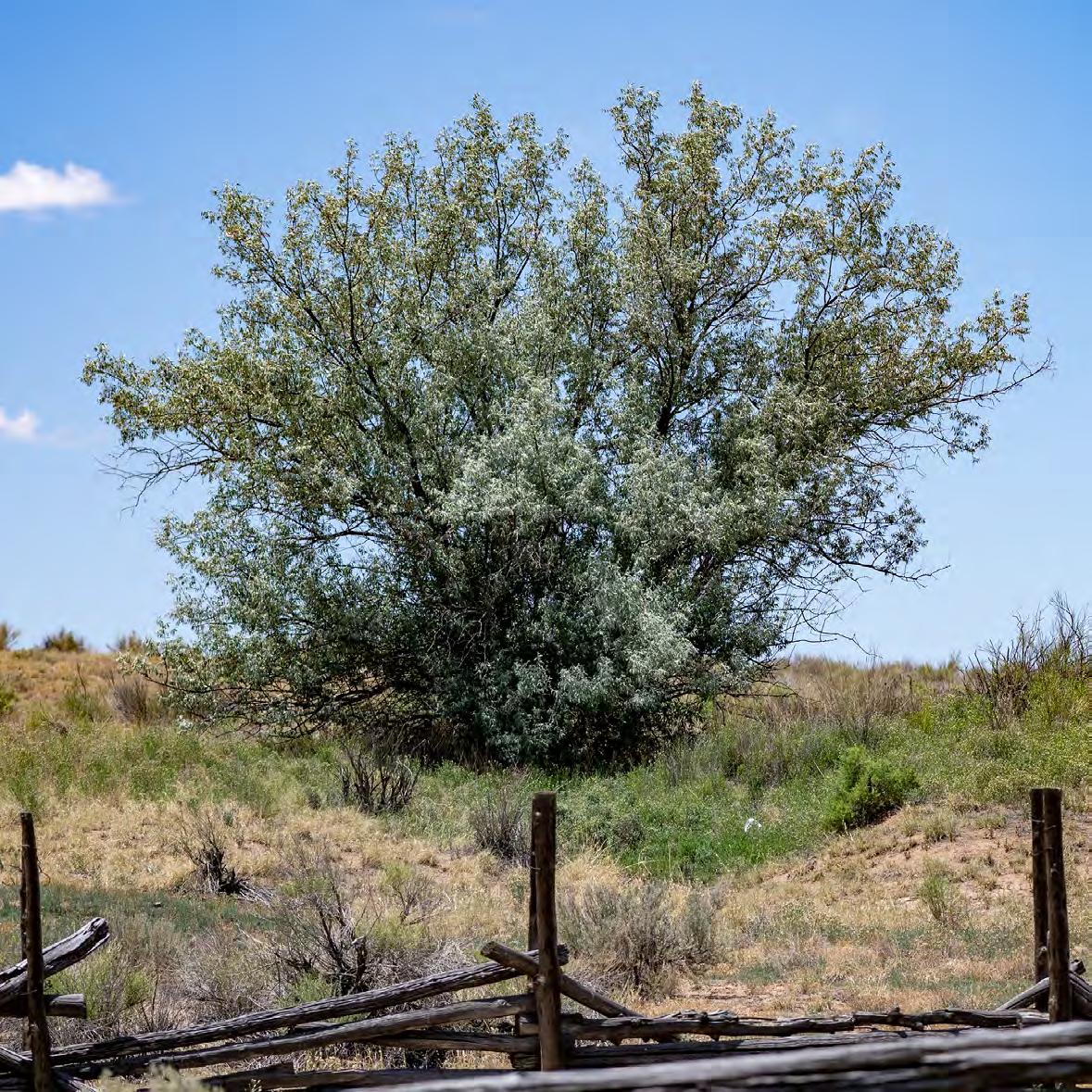
140 ute mountain lands: seasonal living
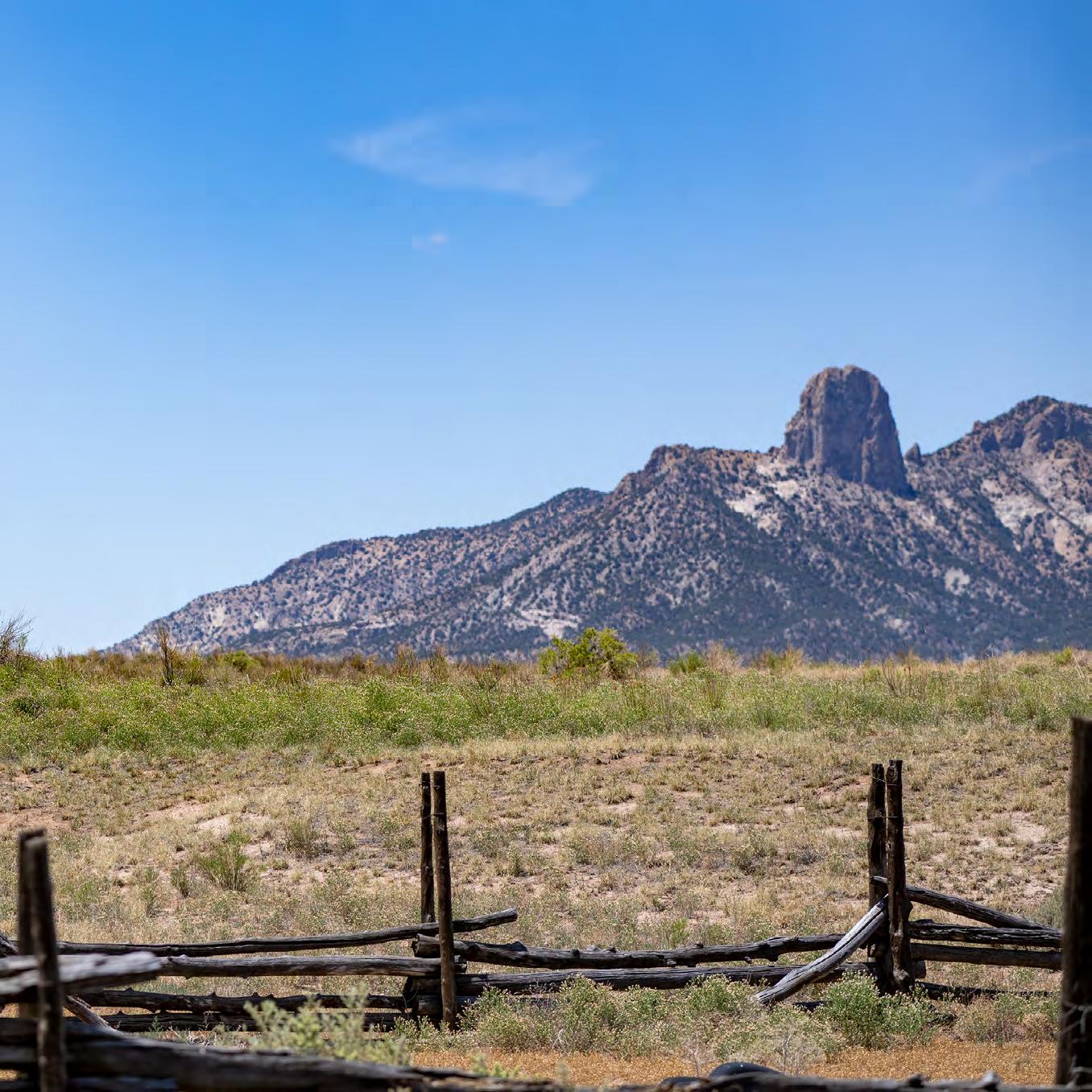
chimney rock and decker pasture.
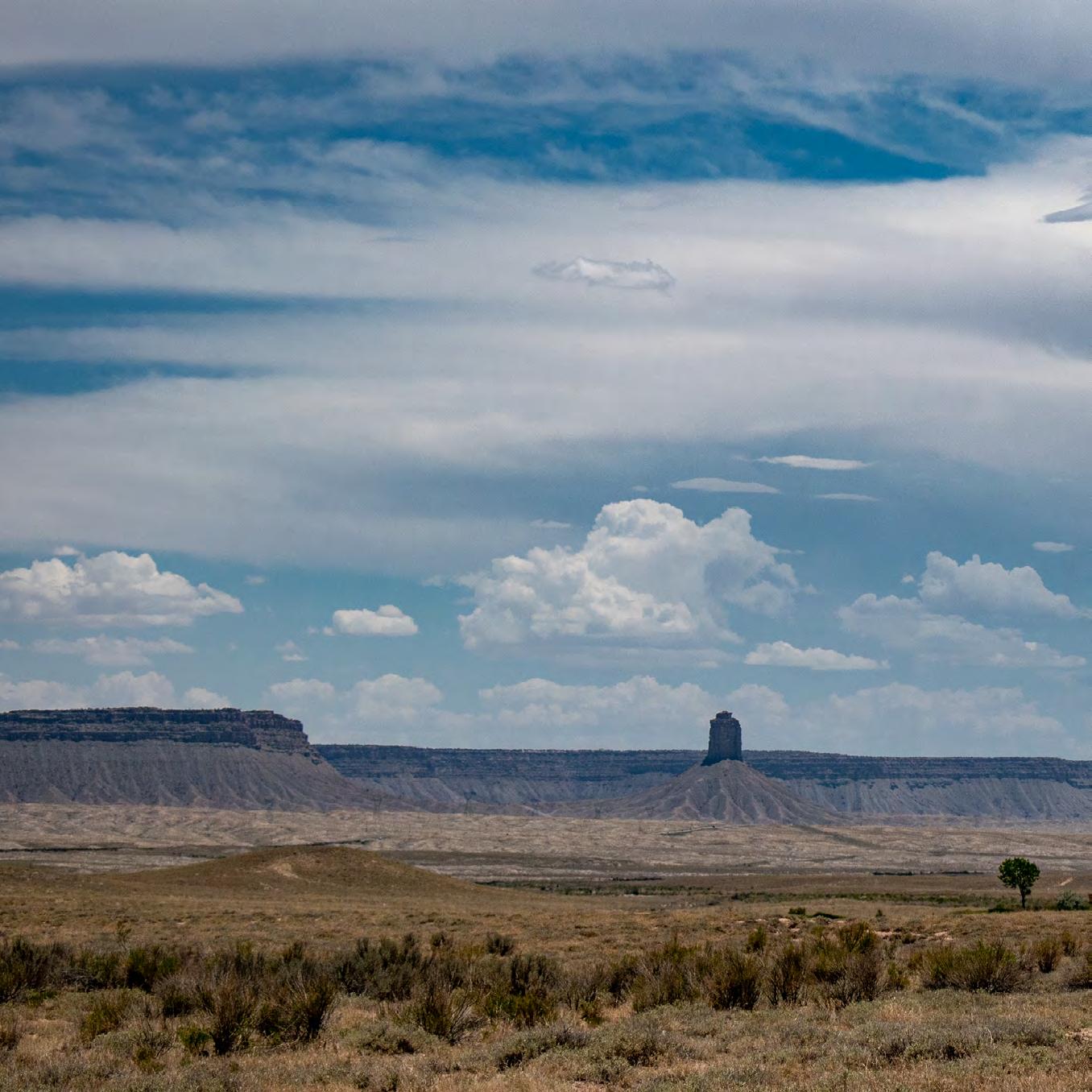
142 ute mountain lands: seasonal living
My grandparents had cattle, too.
I would help them with the cattle. They had their cattle way out in the pasture that’s between Farmington and the canyon, by Chimney Rock. You go that way, and the road goes through Decker Pasture.
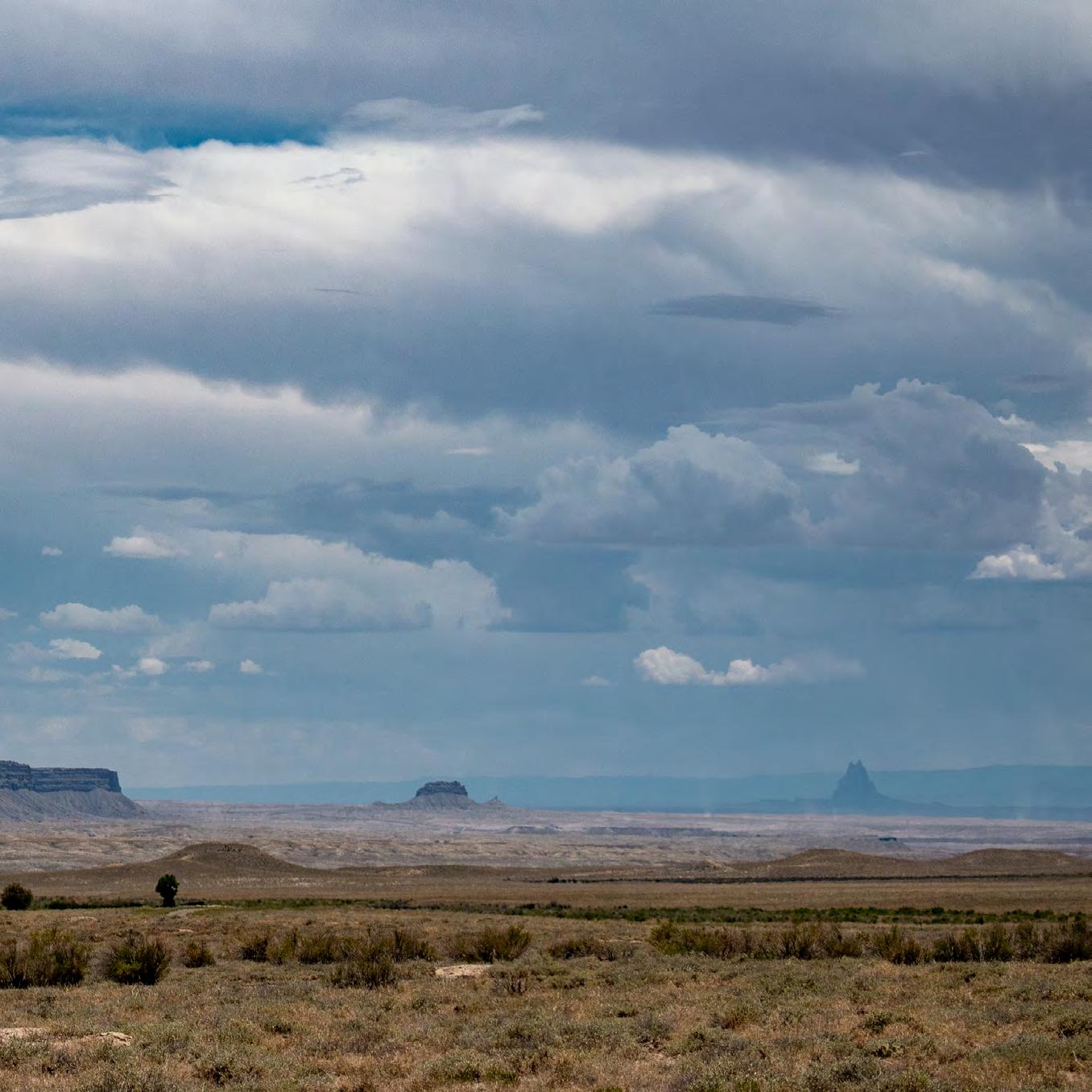 ~ Emily Whiteman ~
~ Emily Whiteman ~
We would take our cattle up to Cherry Creek by horse in springtime, then bring them back to Decker Pasture in the fall.
144 ute mountain lands: seasonal living
~ Emily Whiteman ~

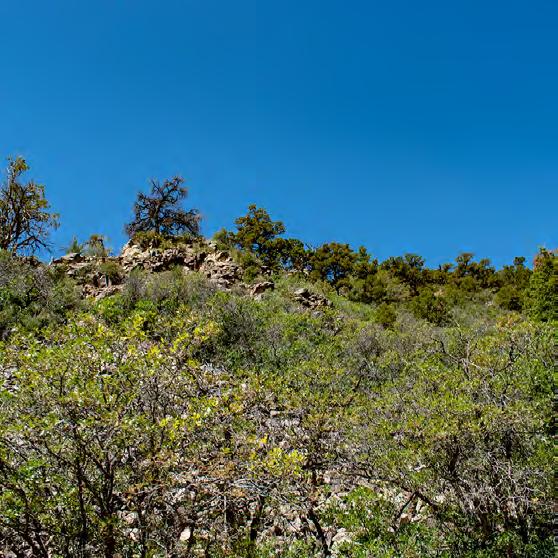

We lived on the Ute Mountain.
Every summer we would move up there. Our family had a sheep camp, and that’s where we spent the summer. That is how we lived for most of the summer time. That is how I was growing up. I remember that there used to be water there. In the winter, we moved behind the mountain.
~ Loma Root House ~
147 wíssiv káav tüvüpüa: seasonal living
~ Jane Lehi ~
148 ute mountain lands: seasonal living
In the summertime, we would go to the mountains and stay there until early fall. Then, we would bring our herds back down.

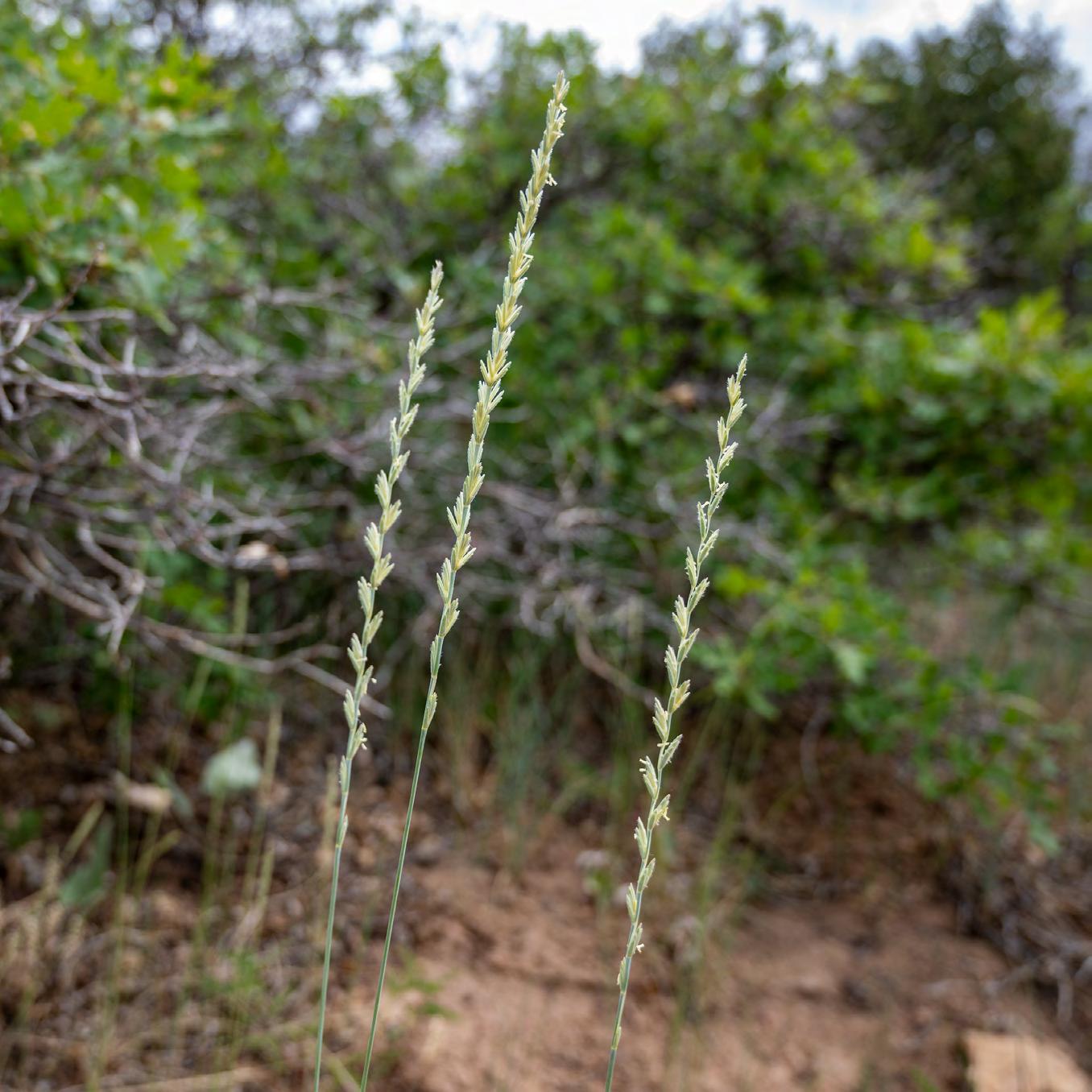
The old folks cooked, they did a lot of cooking outside; bread, food, breakfast, coffee and stuff like that. All our grandparents cooked outside all the time in summertime. They would get up every morning, making coffee, making breakfast.

151 wíssiv káav tüvüpüa: seasonal living
~
Emily Whiteman ~
My grandma’s sister always cooked outside.
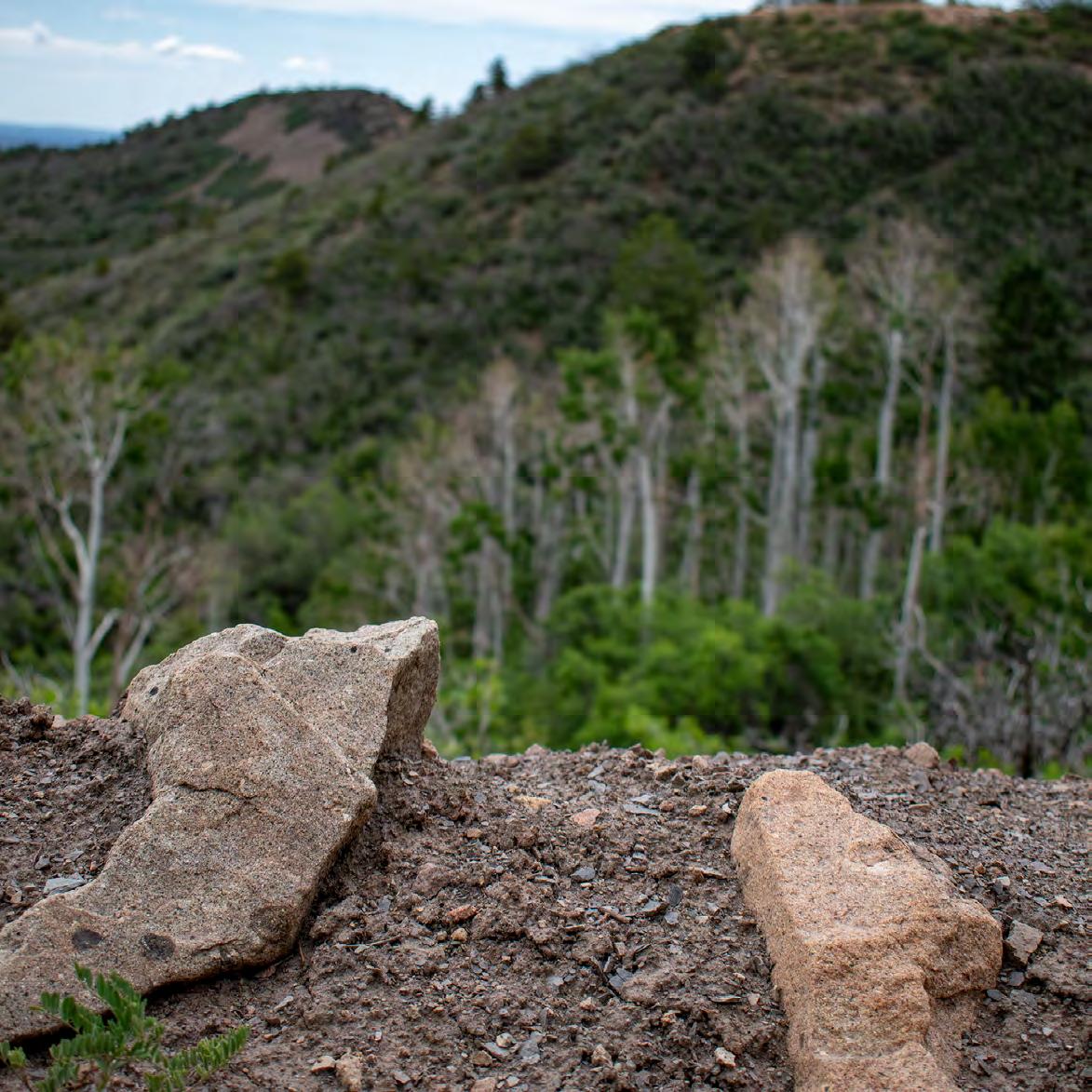
152 ute mountain lands: seasonal living
Now, nobody cooks outside anymore. People don’t eat, or they just have fried bread with coffee.
 ~ Emily Whiteman ~
~ Emily Whiteman ~
Way back, it was different.
Today we have to cook our food on a stove or electric stove. Yet, it was easy to do my mom’s cooking on a wood stove outside the shade house. Sleeping on the floor was easy. And now we got beds. I think that is really different.
~ Jane Lehi ~
154 ute mountain lands: seasonal living


157 wíssiv káav tüvüpüa: seasonal living
I think the way we lived then was better than how we live now. I enjoyed the things that I did with my family. We were close.
~ Jane Lehi ~
name:
date:
My own observations
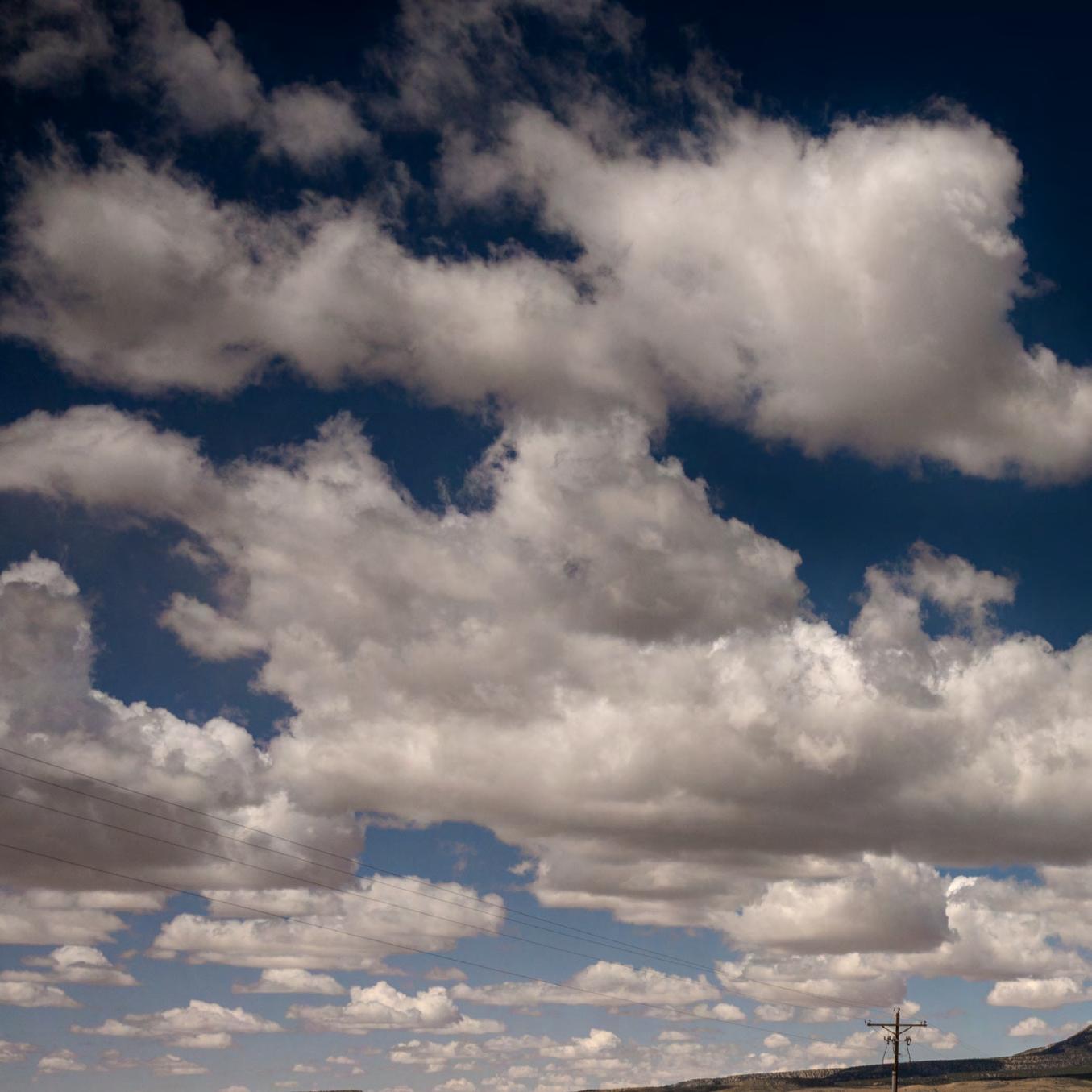

 Wíssiv Káav Tüvüpüa Ut e Mountain Lands
Wíssiv Káav Tüvüpüa Ut e Mountain Lands
 ~ Emily Whiteman ~ on family ties and life changes
~ Emily Whiteman ~ on family ties and life changes













 ~ Loma Root House ~
~ Loma Root House ~
























 ~ Loma Root House ~
~ Loma Root House ~










 – Emily Whiteman
– Emily Whiteman

 ~ Emily Whiteman ~
~ Emily Whiteman ~
























































 ~ Emily Whiteman ~
~ Emily Whiteman ~








 – Loma Root House
– Loma Root House
 chief jack house mounted on horseback, ca 1920.
chief jack house mounted on horseback, ca 1920.






 emily whiteman
emily whiteman





 opposite page: juanita plentyholes (left) and colleen cuthair (right) wearing traditional shawls.
opposite page: juanita plentyholes (left) and colleen cuthair (right) wearing traditional shawls.









 ~ Emily Whiteman ~
~ Emily Whiteman ~

















 ~ Emily Whiteman ~
~ Emily Whiteman ~







 ~ Emily Whiteman ~
~ Emily Whiteman ~



